Archaeological Dig planned for Pendle Hill
Report in Clitheroe Advertiser,see…
http://www.clitheroeadvertiser.co.uk/news/archaeological-dig-planned-on-pendle-hill-1-7915082

Museum, Tea Room, 18th Century Walled Garden
Archaeological Dig planned for Pendle Hill
Report in Clitheroe Advertiser,see…
http://www.clitheroeadvertiser.co.uk/news/archaeological-dig-planned-on-pendle-hill-1-7915082
£1.4 million restoration of Padiham Conservation Area
Pendle Today has announced this year’s steaming dates at Bancroft, CLICK HERE for details.
The Evening Telegraph gives the latest update on this exciting AONB scheme… CLICK HERE for the article.
The Pendle Hill Landscape Partnership web site is… HERE
The Walton Lane Cemetery Chapel in Nelson has been attacked by thieves and vandals. See…
A new use is being proposed for Foreside in the Higherford Conservation Area. See…
http://www.2br.co.uk/news/local-news/2139524/barrowford-residents-in-uproar-over-rehab-centre/
Our first evening lecture as part of our Autumn programme was given by Dr Phil Murphy on Caves, Cavers, Collapses and Corpses and proved to be illuminating in various ways. He discussed mainly the discovery and opening up of Victoria Cave, Settle. This is a very important and renowned cave principally for the scientific evidence that it provides for climate change. The different strata that was found and the evidence of hyena and hippopotamus – warm cycles and reindeer – cold cycles over thousands of years was pivotal to scientific understanding. He opened and closed with some evocative lines by Auden. “When I try to imagine a faultess love or the life to come, what I hear is the murmur of underground streams, what I see is a limestone landscape”.
A party of 11 members of the Friends were welcomed by Carol and Harry Johnson, the owners of the Woodend Coal Mining Museum. After an excellent ….. lunch we were given a lively tour of the small but very interesting Museum. 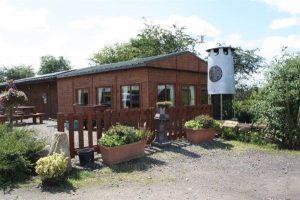 We were shown a plethora of mining equipment and it was easy to understand how hard the working lives of the miners and pit ponies were. This was matched by the social conditions of the time, some of which some of us know first hand and definitely via word of mouth from family and friends – if you were brought up in NE Lancashire. You might be surprised by the number of pits in the area and the distances some workers had to travel underground.
We were shown a plethora of mining equipment and it was easy to understand how hard the working lives of the miners and pit ponies were. This was matched by the social conditions of the time, some of which some of us know first hand and definitely via word of mouth from family and friends – if you were brought up in NE Lancashire. You might be surprised by the number of pits in the area and the distances some workers had to travel underground.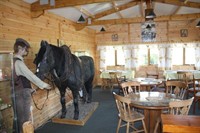
It is well worth a visit – they are closed Mondays, admission £3 and the lunch is very good value, they do afternoon tea also. It’s a good place to while away a few hours on a rainy day,. In spring I believe there are over 10,000 daffodils on display.
For more info visit http://www.visitlancashire.com/things-to-do/woodend-mining-museum-p681900
Gayle Wray
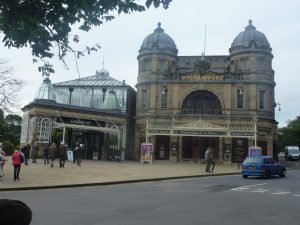 On Saturday 24th September 17 members of the Friends of Pendle Heritage Centre met in Barrowford and were driven direct to Buxton. We had coffee in the Pavilion (designed by Joseph Paxton) and then were treated to a conducted tour of the largely Georgian town by a town guide who told us about the foundation of the town and its transformation from the original village to Victorian Spa town. Some of the improvements made by the Dukes of Devonshire were noted but the renowned Crescent was shrouded in scaffolding; after many years of decay it is being converted into a five star hotel.
On Saturday 24th September 17 members of the Friends of Pendle Heritage Centre met in Barrowford and were driven direct to Buxton. We had coffee in the Pavilion (designed by Joseph Paxton) and then were treated to a conducted tour of the largely Georgian town by a town guide who told us about the foundation of the town and its transformation from the original village to Victorian Spa town. Some of the improvements made by the Dukes of Devonshire were noted but the renowned Crescent was shrouded in scaffolding; after many years of decay it is being converted into a five star hotel.
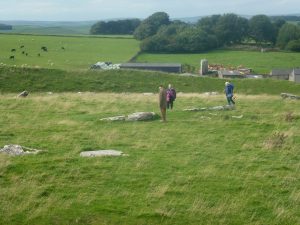 After lunch we again boarded the coach and drove to Arbor Low Stone Circle. This is a henge regarded by some as the “Stonehenge of the north”. It consists of an oval bank about 75 metres in diameter with about 50 large stones all lying down now but presumably the majority were standing formerly. Nearby is a bronze-age burial mound which appears to be connected to Arbor Low by an earth bank. This is built on top of a Neolithic long barrow.
After lunch we again boarded the coach and drove to Arbor Low Stone Circle. This is a henge regarded by some as the “Stonehenge of the north”. It consists of an oval bank about 75 metres in diameter with about 50 large stones all lying down now but presumably the majority were standing formerly. Nearby is a bronze-age burial mound which appears to be connected to Arbor Low by an earth bank. This is built on top of a Neolithic long barrow.
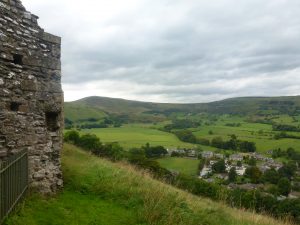 Later in the afternoon we drove to Castleton, the home of the ‘Blue John’ mines and shops which is where some of the party spent most of their free time (and money) buying Blue John jewellery. One lady was overheard to remark that she had bought some Blue Peter which seemed unlikely. There were other attractions; some people visited the local museum and Tourist Information centre and a few climbed up the hill to Peveril Castle.
Later in the afternoon we drove to Castleton, the home of the ‘Blue John’ mines and shops which is where some of the party spent most of their free time (and money) buying Blue John jewellery. One lady was overheard to remark that she had bought some Blue Peter which seemed unlikely. There were other attractions; some people visited the local museum and Tourist Information centre and a few climbed up the hill to Peveril Castle.
After a cup of tea it was time to return to Barrowford, where we arrived about 7pm.
Under the leadership of Alex Whitlock, thirteen intrepid explorers crossed the border into the rather windy (and occasionally wet) 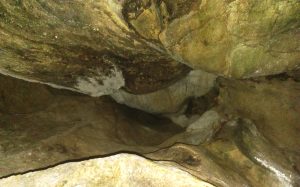 Yorkshire Dales to join the Ingleborough Archaeology Group to view the widely publicised Gauber Viking Settlement. However, a slight detour above Settle on our outward journey allowed us – like a flock of sheep – to follow AW to view Kinsey cave, which excavations have shown to have been inhabited in the paleolithic era.
Yorkshire Dales to join the Ingleborough Archaeology Group to view the widely publicised Gauber Viking Settlement. However, a slight detour above Settle on our outward journey allowed us – like a flock of sheep – to follow AW to view Kinsey cave, which excavations have shown to have been inhabited in the paleolithic era.
Half an hours drive then brought us to Ribblehead Quarry where we were taken on a fascinating walk by archaeologist and author David Johnson who led us out of the quarry onto a fabulous area of limestone pavement to view what was obviously an old settlement. 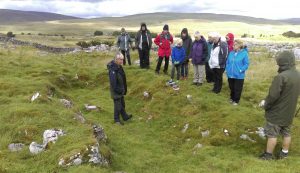 But why on earth would you build on such uneven ground? Answer – they didn’t! Soil erosion transformed the landscape from good to unusable land leading to a relatively short period of habitation. With walls 2 metres thick and an internal length of nearly 20 metres the main building has long been considered to be of Viking origin but the relatively recent discovery of two 9th century coins has led to it being reassessed as pre 900AD which is some years before the Vikings invaded! This theory is supported by the layout of the building which appear to have been for human use only (the vikings are believed to have kept livestock in one half).
But why on earth would you build on such uneven ground? Answer – they didn’t! Soil erosion transformed the landscape from good to unusable land leading to a relatively short period of habitation. With walls 2 metres thick and an internal length of nearly 20 metres the main building has long been considered to be of Viking origin but the relatively recent discovery of two 9th century coins has led to it being reassessed as pre 900AD which is some years before the Vikings invaded! This theory is supported by the layout of the building which appear to have been for human use only (the vikings are believed to have kept livestock in one half).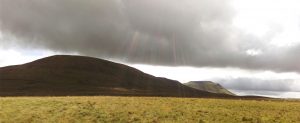
So ended a most interesting trip with the sun coming out to light up Ingleborough. The change in the weather must have been even more welcome to the dozens of walkers attempting the Three Peaks walk!
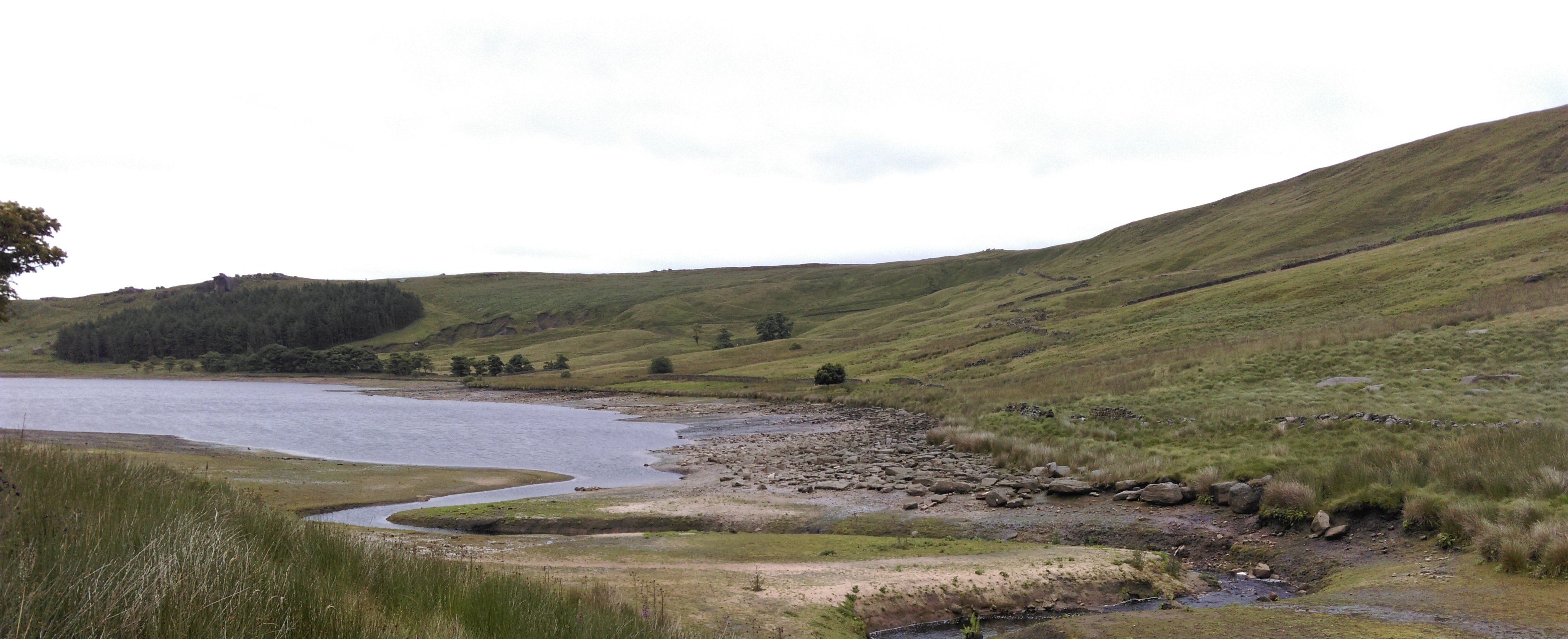
A small but elite group did a very low speed walk along the northern edge of Widdop today.
We lunched in Orthostat Bay before walking out along Barn Point.
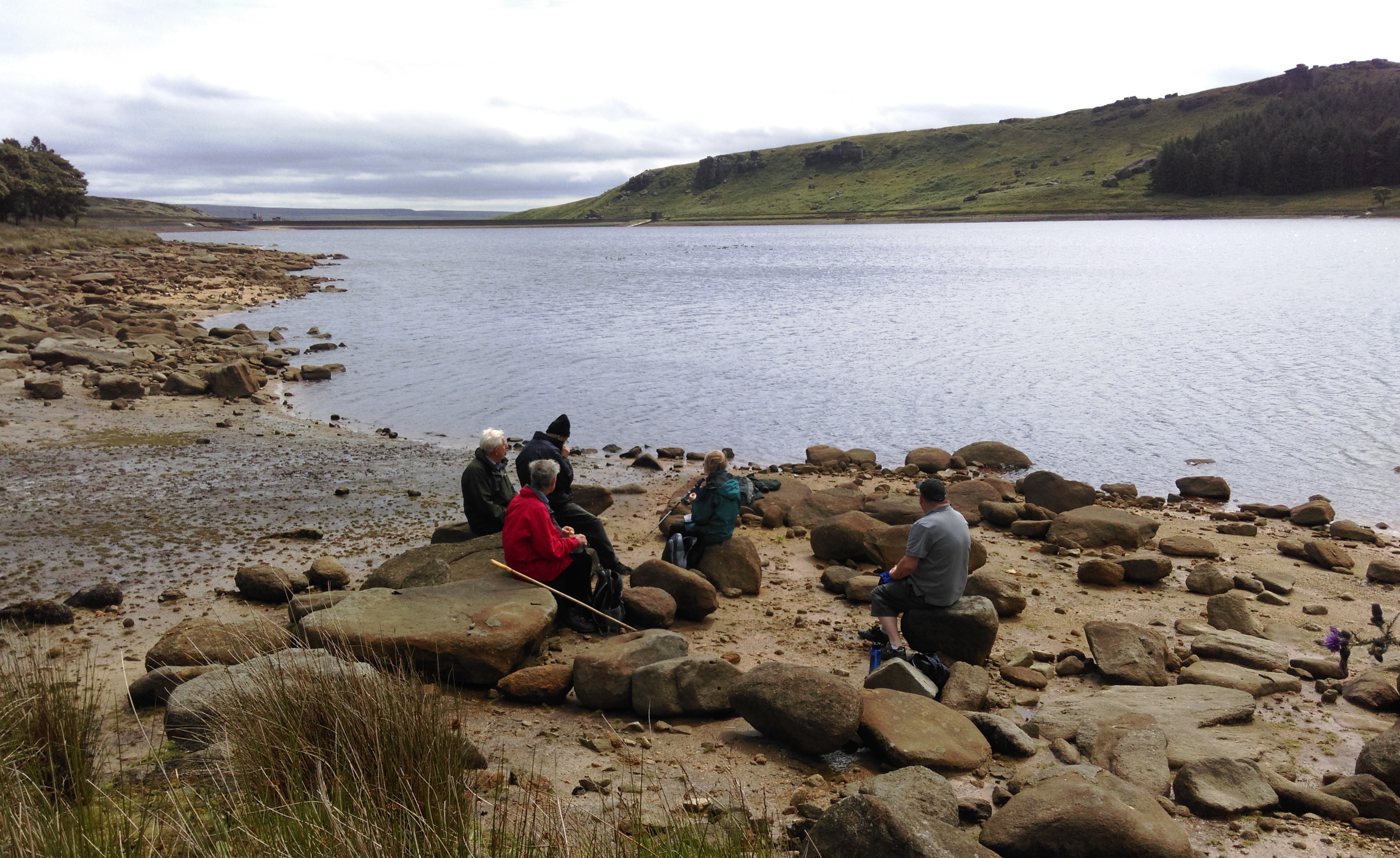
The walk was a break from the usual field walks that are part of the vaccary & PHV projects. Today was about enjoying the rather excellent views, bimbling along looking at the features of a preserved upland landscape & beachcombing.
Find of the day was pretty much split between Steve and Ken – the final decision possibly going to Steve on a numeric basis.
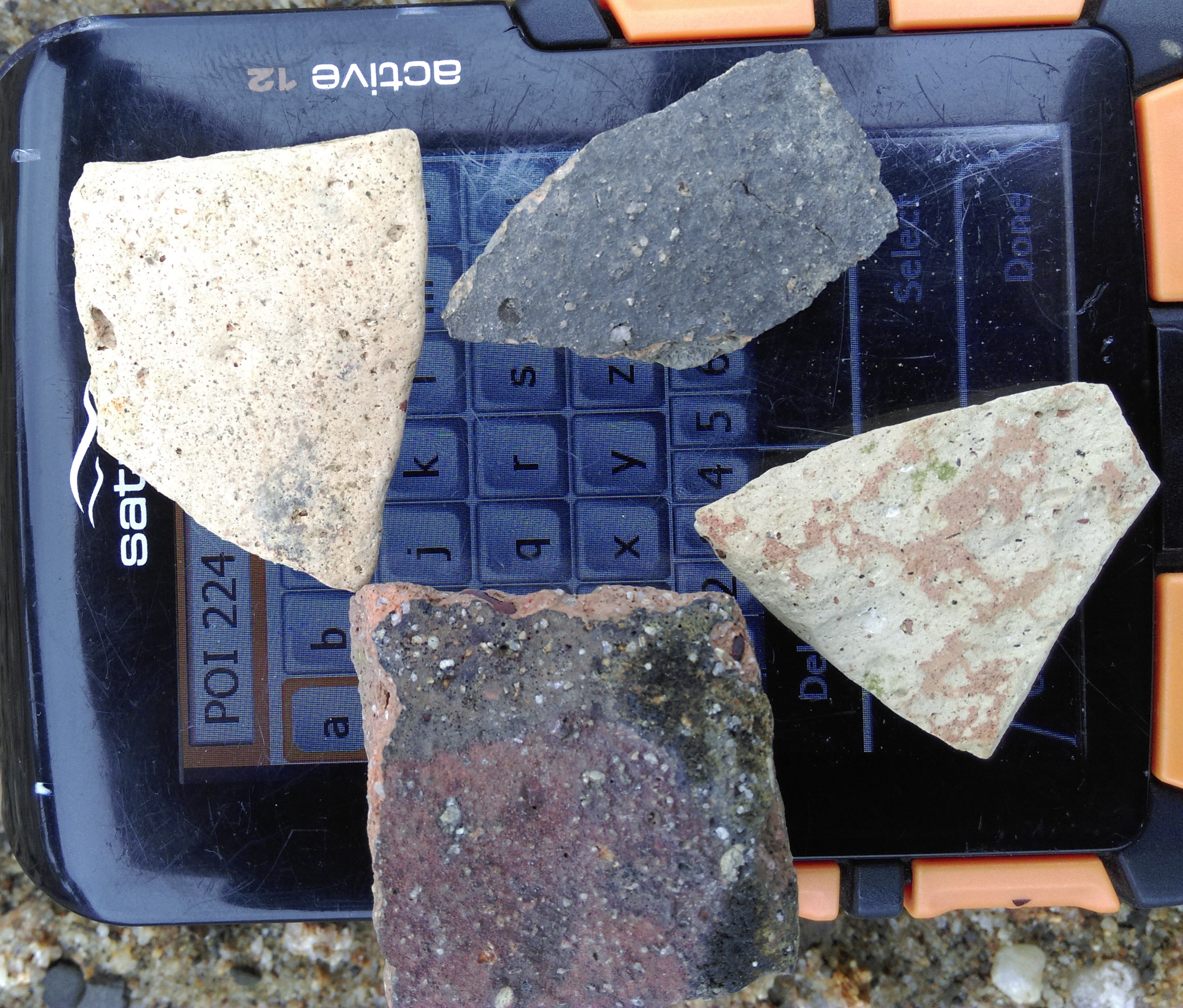
Posted from a secret location near Morecambe Bay!
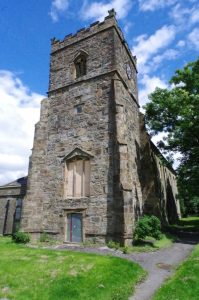
One of the area’s most ancient Christian sites, “Church Kirk”, near Accrington is up for sale. Its unique name simply means ‘the church’ in the old Saxon and Viking languages. The absence of any further description illustrates its importance to medieval people.
The Church Kirk story goes back to the Dark Ages when, the early Anglo Saxons were gradually being converted to Christianity by the efforts of Saint Aidan of Lindisfarne and King Oswald of Northumbria. It was a violent and complex period where Northumbria became the first of the Saxon kingdoms to rule Britain.
Church Kirk was established on the site where King (and later Saint) Oswald camped with his army on his way to face the violent pagan King Penda of Mercia. Adjacent is Oswaldtwistle, the name meaning “Oswald’s camp in the fork of the river”. A battle took place on 5th August 642 at Maserfeld, near Oswestry, where the Mercians were victorious and Oswald was slain. Penda’s victory, however, was short-lived as he too was killed in battle near Leeds the following year.
Oswald’s remains were mutilated by Penda and hung on a tree (Oswestry means “Oswald’s Tree”) but were later reclaimed by the Northumbrians and became holy relics of medieval England. Oswald’s head survives to this day in St. Cuthbert’s coffin in Durham Cathedral.
Originally dedicated to Saint Oswald, Church Kirk contained a large shrine to the saint. A casualty of the Reformation, it was destroyed in 1537 “with pincers, axes, hammers, daggers and knives” by the notorious Roger de Rishton of Ponthalgh. The churchyard also had a Holy Well, which is recorded in several medieval documents. It was the well that King Oswald had used when his army camped there and one of a small number of Saint Oswald wells across England. The church was subsequently dedicated to All Saints and then St. James, a dedication shared by Accrington and Altham churches.
The church building has three broad phases, a medieval tower, a Georgian nave with balconies and a Victorian chancel. Each represents an important phase in the history of the area. The medieval tower is perpendicular in style perhaps early 1400s, though it is believed to date from the 1200s. It is a robust northern style tower, not tall but where large stone blocks give a sense of mass.
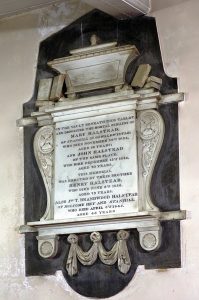
The nave was rebuilt in 1804/5, just as the Leeds & Liverpool Canal was being built adjacent. Much larger than the original, it was to accommodate the greatly increased population that came with the industrial revolution. In contrast to the rugged medieval construction, it has plain ordered styling and water-shot stonework like the houses, chapels, weavers cottages and early mills of the time. Water-shot stonework is where regular blocks of stone were laid slightly tilted so that rainwater quickly ran off the wall. Inside the nave, there is a medieval font and a lovely series of classical wall monuments, two by the famous Kendal architect George Webster.
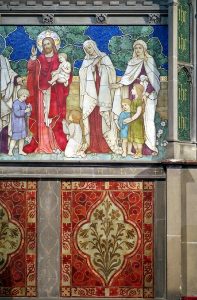
The late Victorian chancel reintroduced the Gothic style but with an Arts & Crafts twist. It represents a romantic response to the rational and functional thinking that underlay industrialisation. It was built to accommodate the High Church worship of the time, and to house a fine organ. It is especially beautiful with choir stalls that blend Decorated Gothic with art nouveau and an exceptional Arts & Crafts opus sectile mosaic of 1909 designed by Powells of Whitefriars.
The church interior is a beautiful light space with two excellent stained glass windows by Edward Burne Jones and William Morris and four more by the Arts & Crafts glass artist, Bernard D. Walmsley, who came from Blackburn but set up in Chapel Stile, Langdale, Lake District. Currently, the windows are boarded over for security, so the only lighting is artificial.
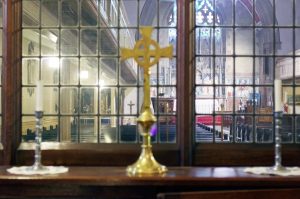
All in all, this is a wonderful Grade II* Outstanding Listed Building with an amazing history. The sale is being handled by Lea Hough Chartered Surveyors, Blackburn on behalf of Blackburn Diocese and the Church Commissioners. CLICK HERE for the sales particulars.
The Hyndburn Mayor, Cllr Tim O’Kane and MP for Hyndburn, Graham Jones, launched Stanhill’s new heritage trail today.
 Stanhill Methodist Church was packed with heritage buffs and local people. Richard Hooper of Stanhill Residents led the proceedings which included a talk about James Hargreaves and the Spinning Jenny, a slideshow, some short speeches and a close look at the specially made replica of the Spinning Jenny, the machine which ‘changed the world’.
Stanhill Methodist Church was packed with heritage buffs and local people. Richard Hooper of Stanhill Residents led the proceedings which included a talk about James Hargreaves and the Spinning Jenny, a slideshow, some short speeches and a close look at the specially made replica of the Spinning Jenny, the machine which ‘changed the world’.
We all then had refreshments and time to chat.
Stanhill heritage trail can be seen here…
http://www.stanhillvillage.co.uk/event/heritage-trail-walk-reccuring/
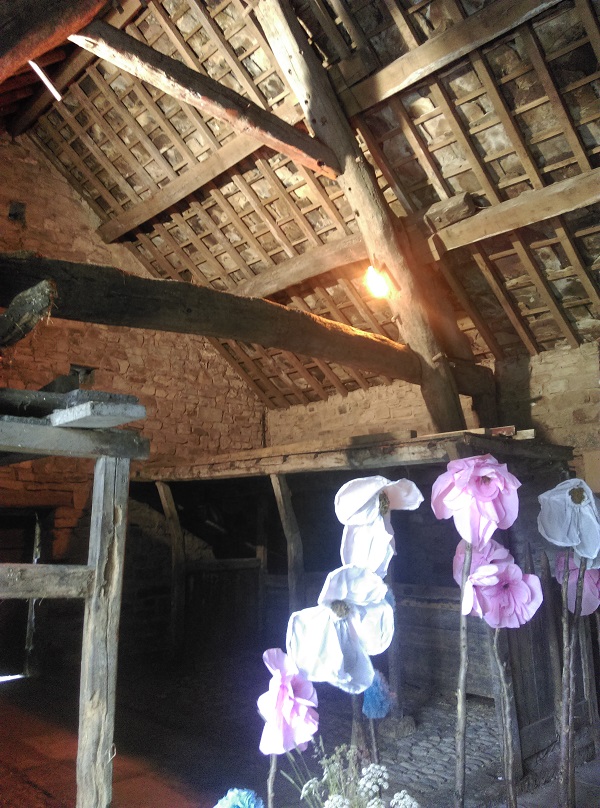
Our day started with a slight twist. Having finished our pre walk meeting in the Heritage Centre Café (aka The Office) – we were invited to take a look at the newly renovated cruck framed barn. This has gone from an agricultural use to a marital one. Today it was being bedecked for a wedding (see image). I hope it was a happy event and went without a hitch (except the official one).
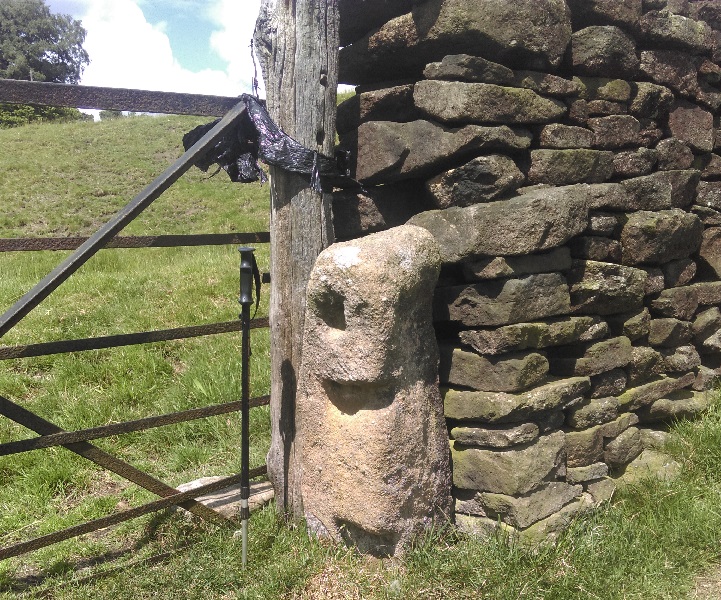
The walk itself started near Old Hall Farm, Roughlee, and initially followed Pendle Way west north west, roughly. There seem to be a number of old building platforms in the hay meadows above the village. No detail was discernible due to the height of the flora. Higher up we encountered numerous quarries before briefly joining the road that runs north out of Roughlee. Just before we did that we spied a set of old gate posts (image above) that are either medieval or early post medieval. After our brief stint on the road we headed along the north east edge of Brown Hill. This afforded us a fine view (image below) of the subject of two walks from earlier this year – Admergill.
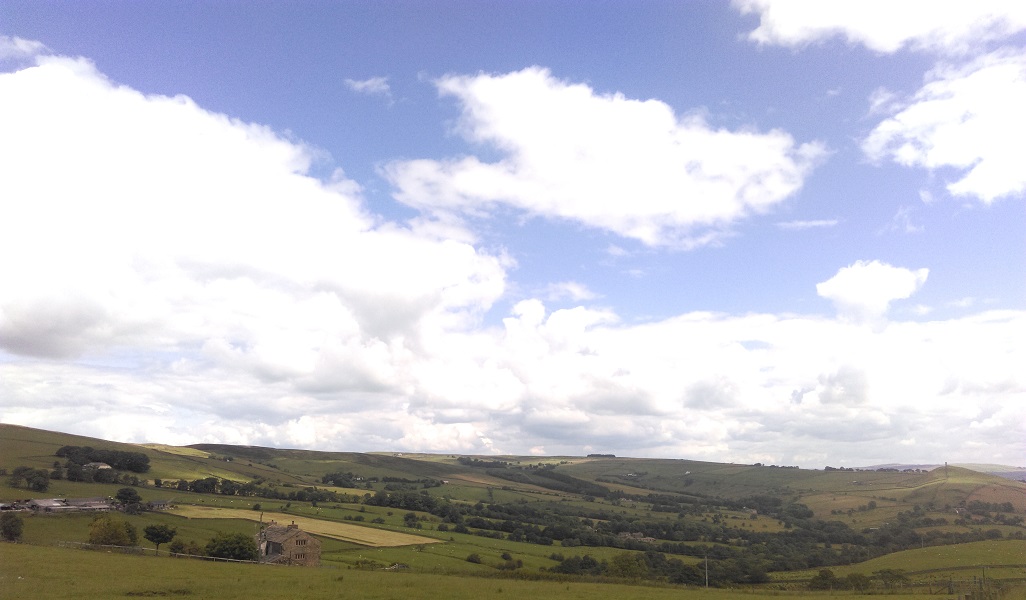
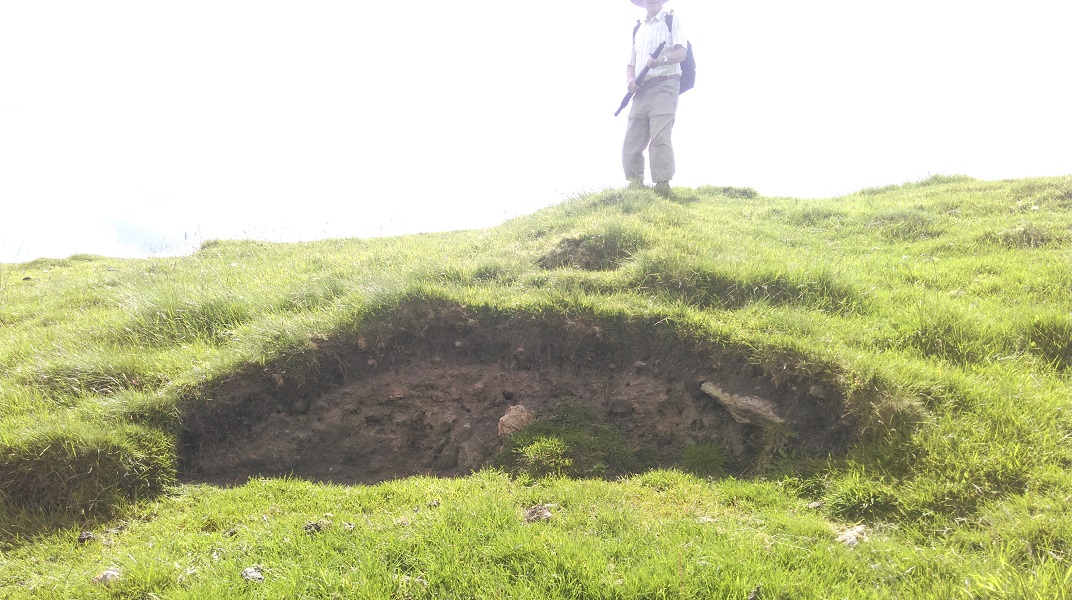
At the north end of Brown Hill, running up to its summit, we noticed an old double ditch and bank. The image above shows it in section (courtesy of erosion) with its crown elegantly highlighted by legs. The feature becomes better defined the lower you go. It warrants further investigation. We stopped for lunch nearby and enjoyed the excellent views – like the one in the header image looking west along the Hidden Valley toward Spen Brook. After lunch we headed north east along the ridge, stopping for a look at Hollin Top Laithe Barn (one for recording) and its ancillary features – stone gatepost, walls, troughs, pitched track etc (image below). At Bank Ends we dropped down to Blacko Foot and paralleled Blacko Bar Road. In fields near North Farm we saw platforms & a banked ditch that need some research. They are on the old aerial images of the area but no clues are offered by the early OS maps. The ditch defines the edge of an area of intense ridge & furrow activity. From here we followed the old, possibly medieval, road back to Old Hall Farm and the end of the walk.
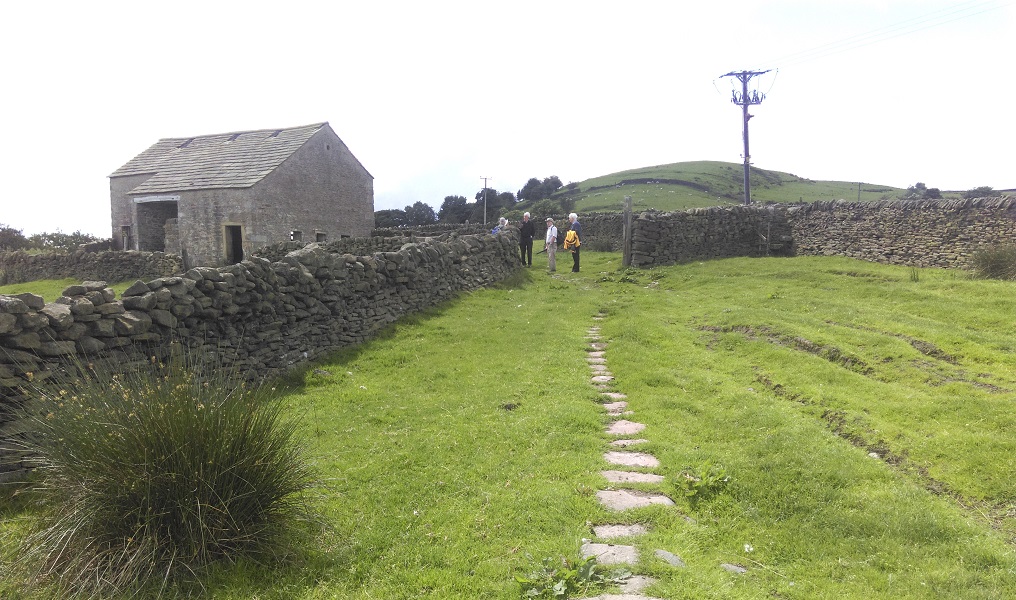
One objective of today was to look at a possible chert knapping site identified on one of the fieldwalks that comprised Phase 1 of the Pendle’s Hidden Valley Project. More material has eroded out of the site in the past year or so. I am now happy to upgrade the site from possible to probable.
I know I keep banging on about joining us on these walks because you never know what secrets of the past you may discover, or what surprising sights you may see, but it really is true. So join the Friends of Pendle Heritage and join us one of our field walks, digs, or other events. On which note, the final image was possibly the oddest thing seen today – not sure what Mother was saying to our kid but possibly summat along the lines of “Dunno what it is, but its been there since Noah were nobbut a lad”
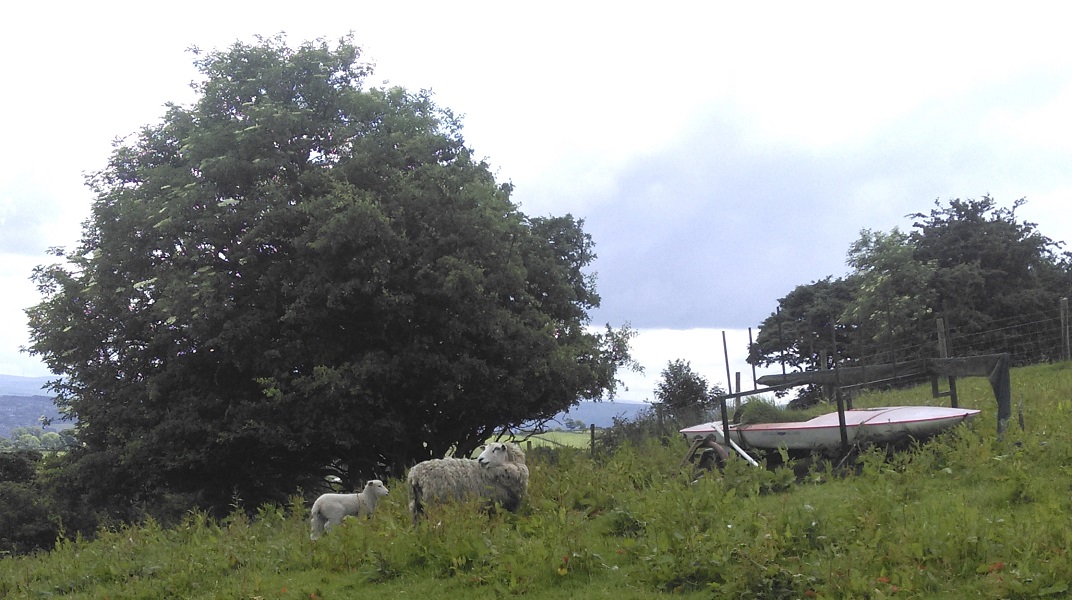
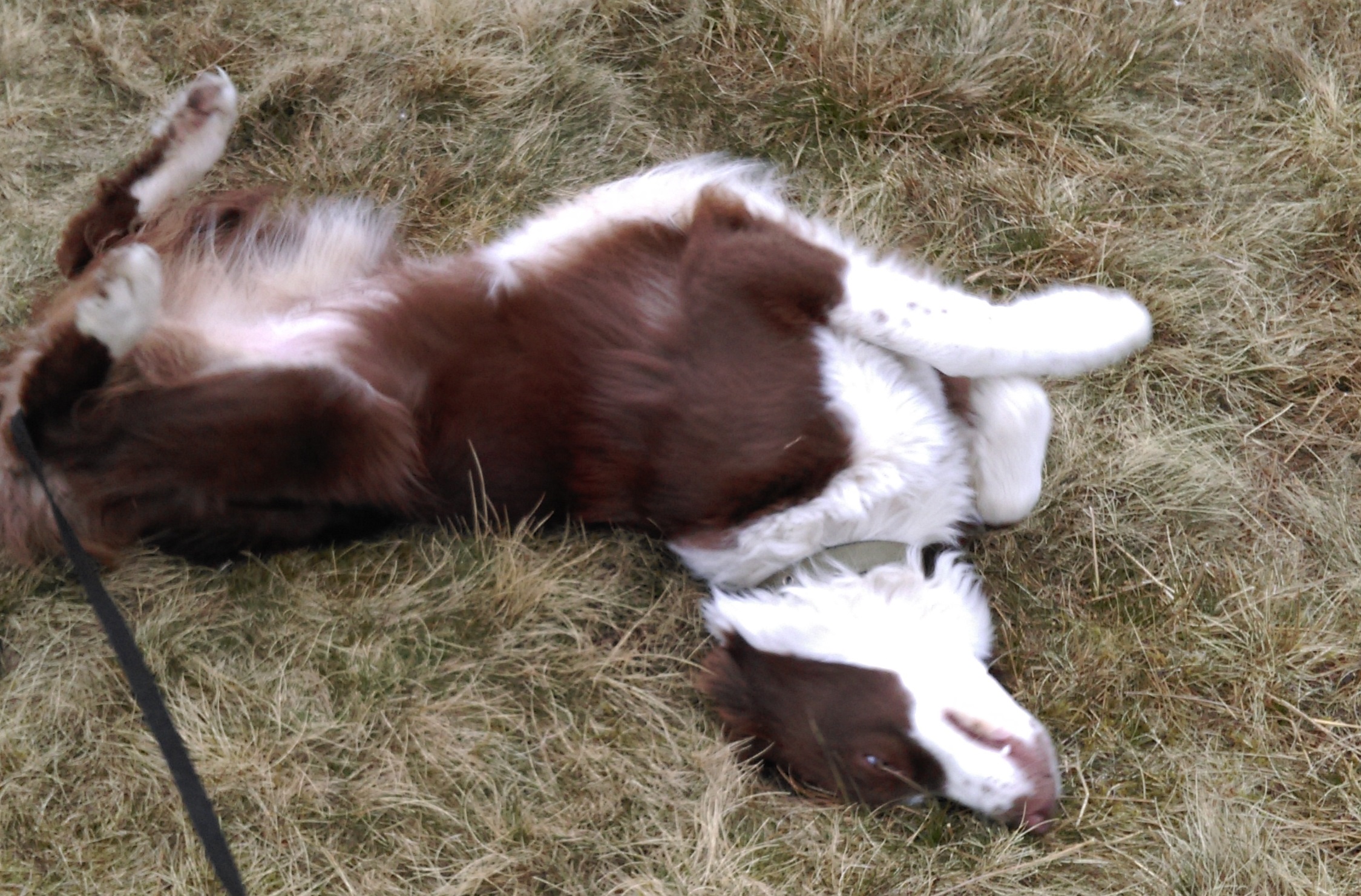
Post excavation news – I have started the conservation of the bones from the dig.
The first stage of the work was to remove the soil carefully from the bone. This was a slow painstaking process and somewhat frustrating as the bone is very soft & fragmentary.
The next stage is to allow the bone to dry slowly, brushing off any remaining soil as it dries and loosens. This will take a few months. When that is finished the bone will be given a stable coating to preserve it.
While removing the soil from one skull’s cranial cavity I found a fragment of leg bone from what was once a sheep (probably). It has been artificially split and is in much better condition than the dog bone – probably due to having been heated. The interior face of this bone is very smooth suggesting that it have been the handle of something. It is so smooth that initially I thought the fragment was from a pipe bowl.
Remember to keep an eye on the events calendar – we have a field walk in the Hidden Valley coming up, and also a session with the finds from the dig (more post ex).
Tata ’til then.
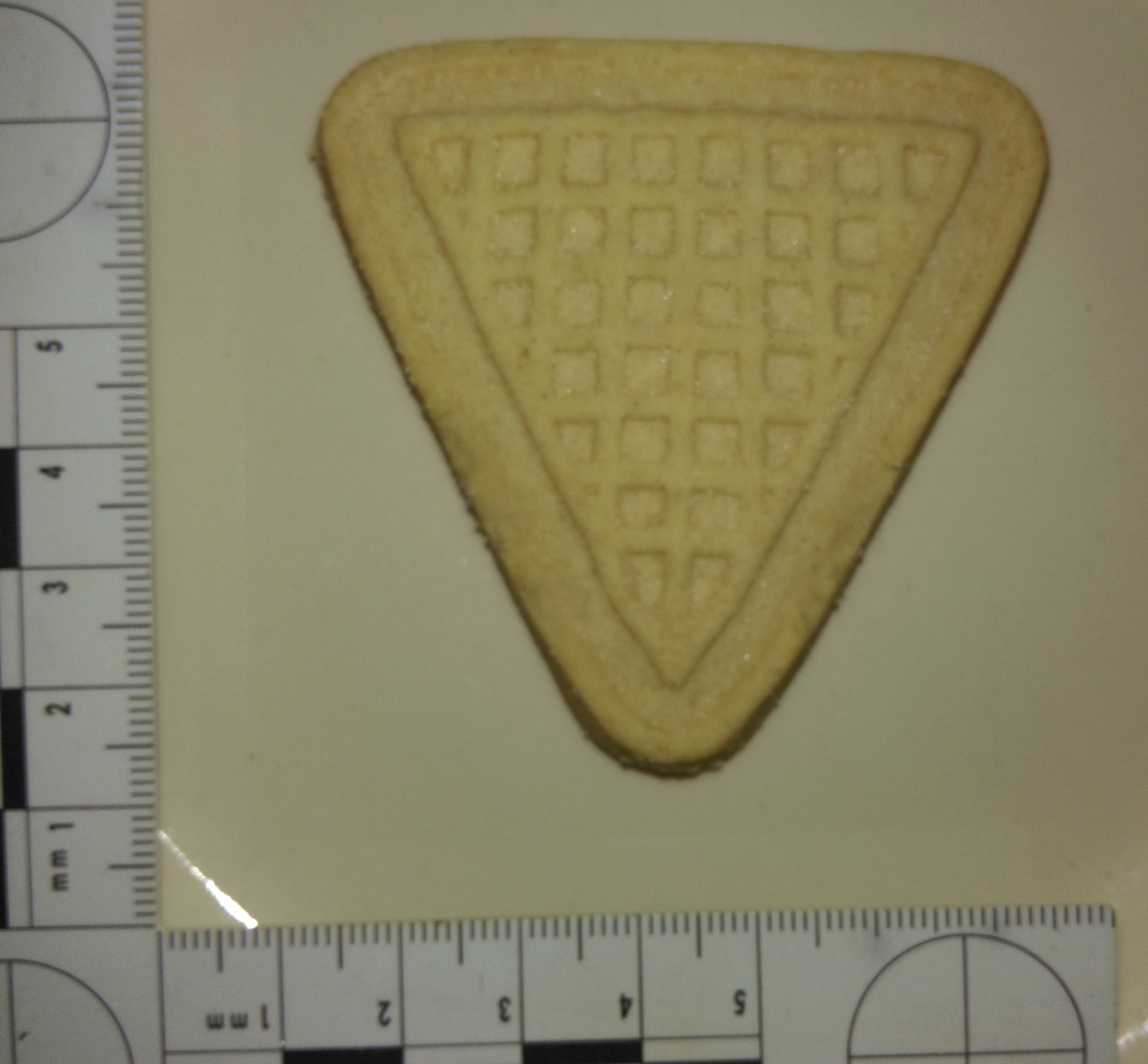
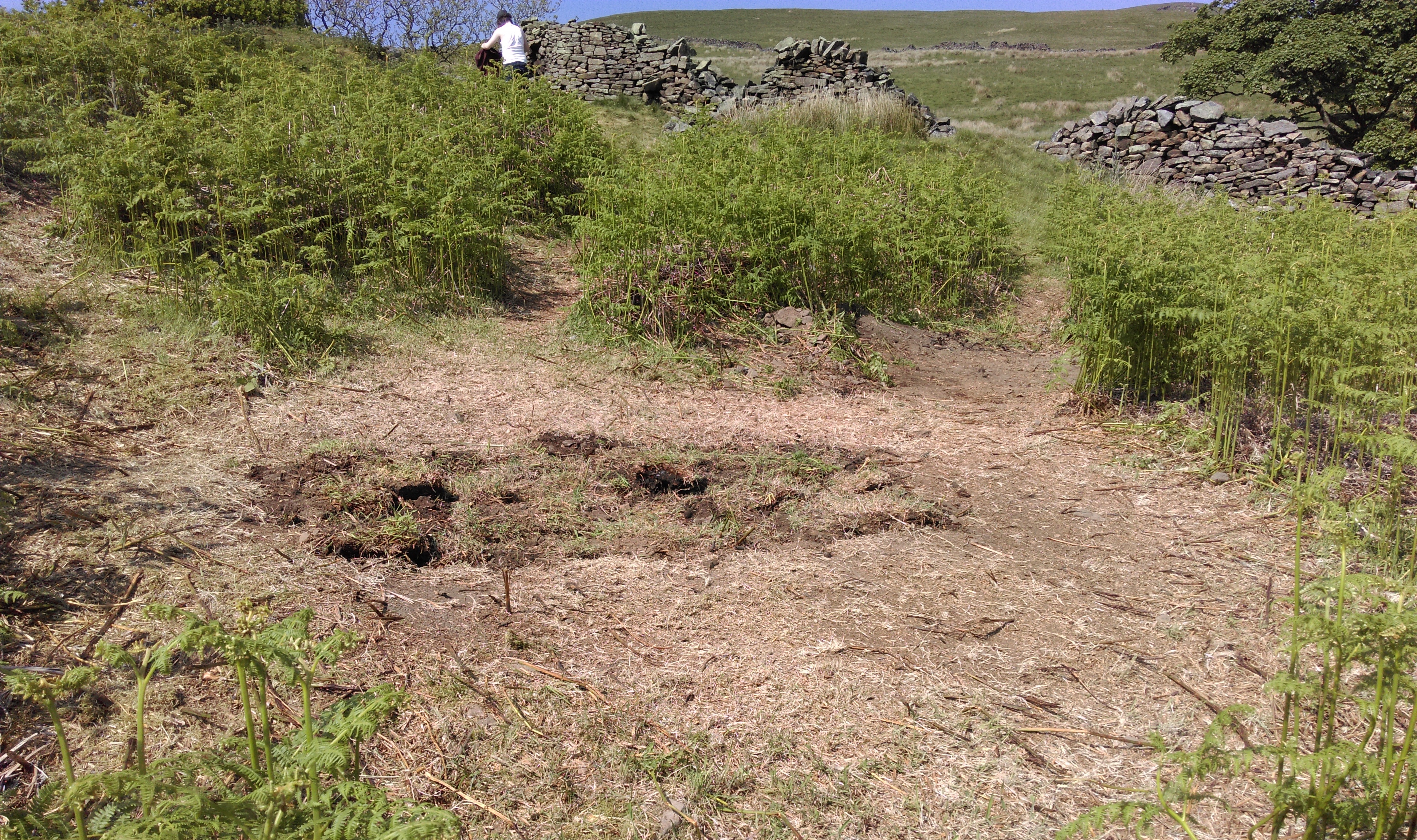
Final day & it was spent backfilling the trenches – many thanks to Pam, Mike, Fiona, Steven, Idris, & Rhiannon for their help. The image above is the filled T2 & the series of images are of the various stages of backfilling T1.
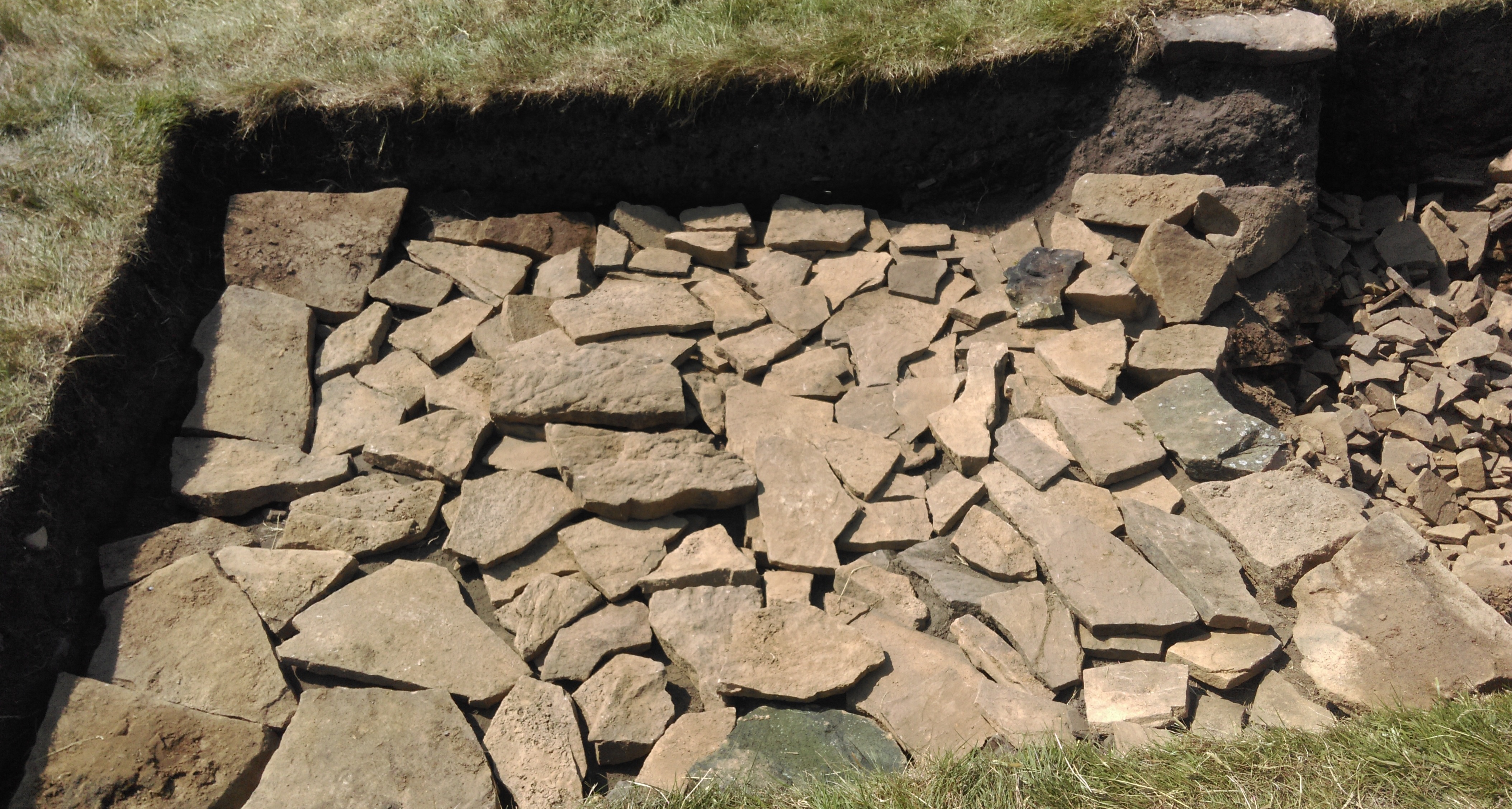
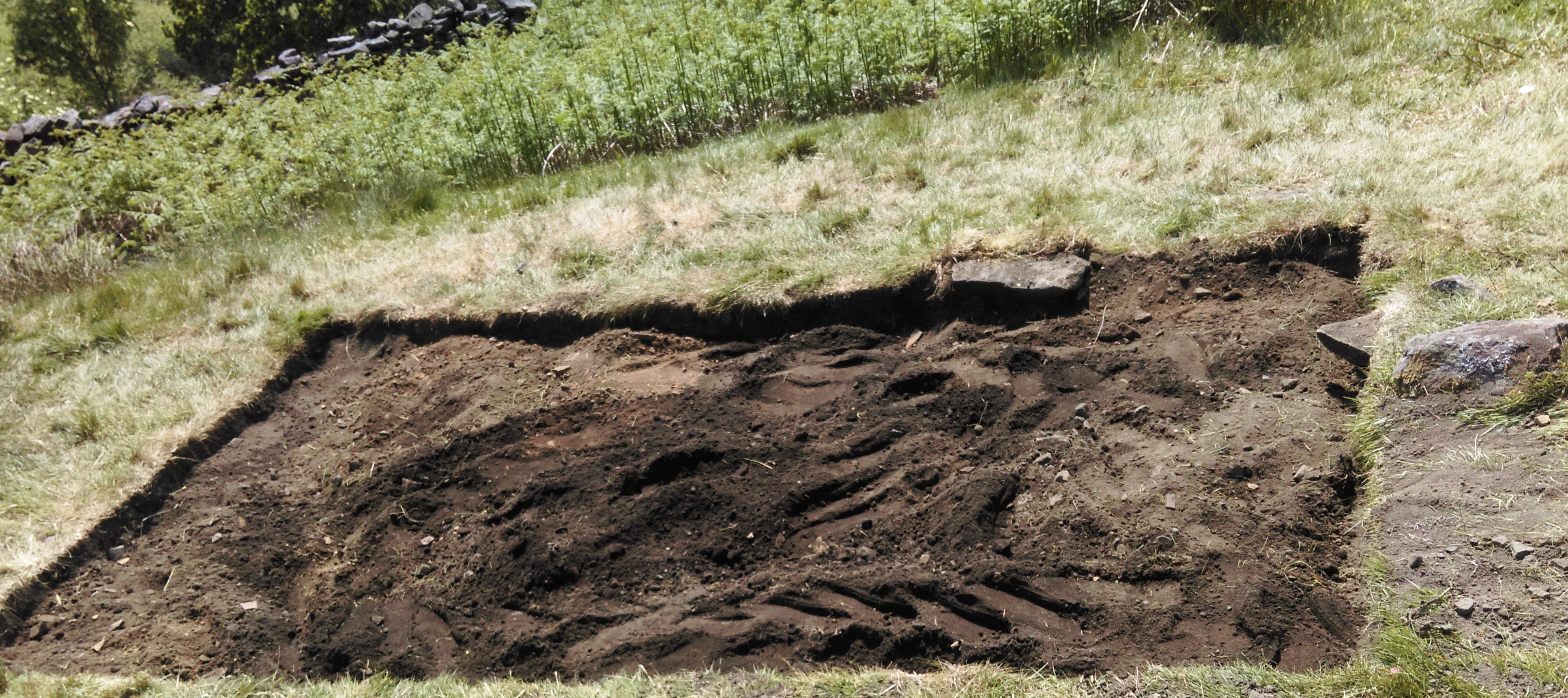
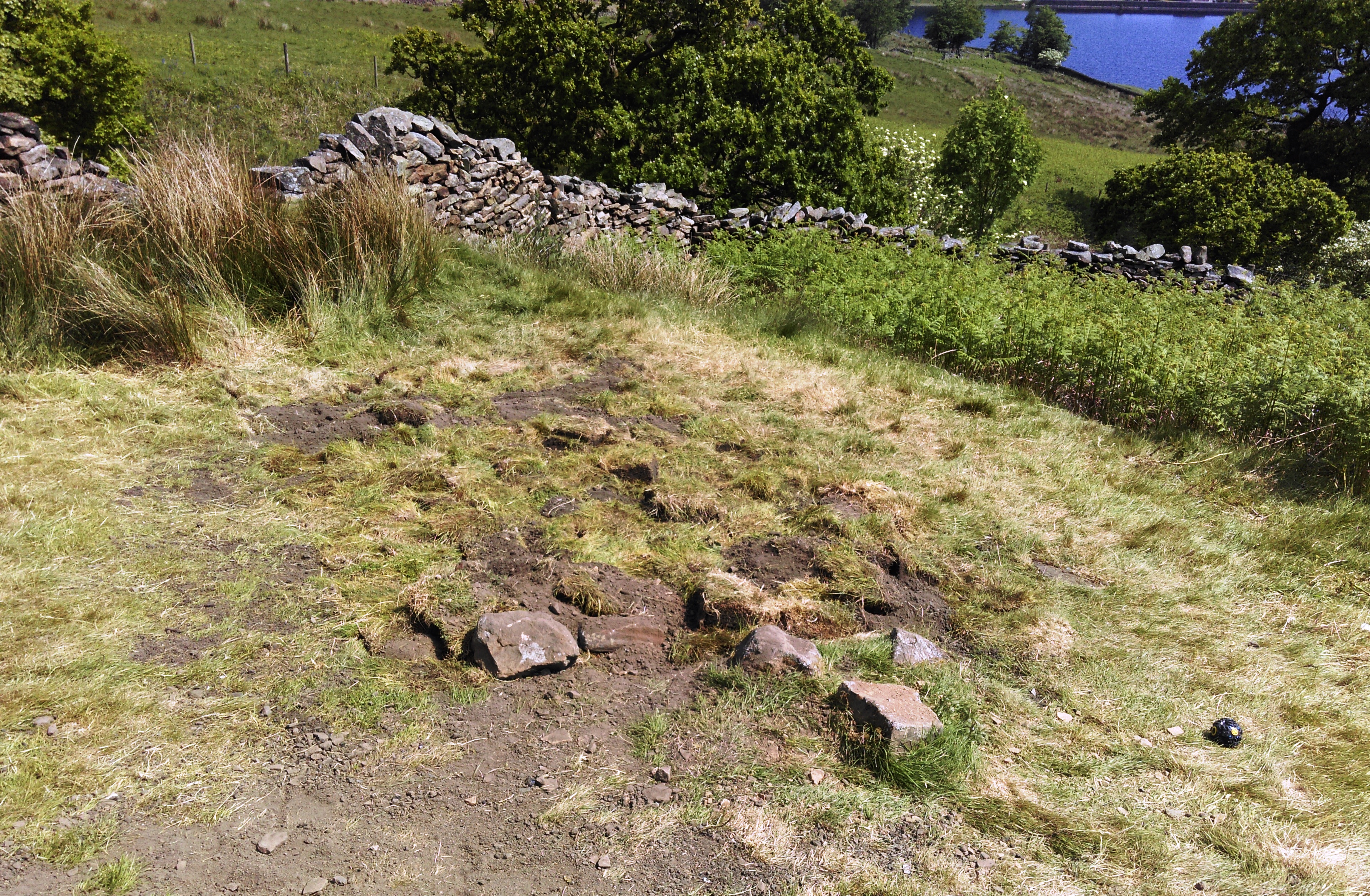
Few little things to ask those of you who attended – 1) someone has left their trowel behind; 2) someone has wandered off with one of ours in error (red & black tape); 3) someone has left their brush behind – such things are easy today when tired at the end of the day, especially if one’s mind is on other things. Anyway, I’m pretty sure it wasn’t the little fellow below.
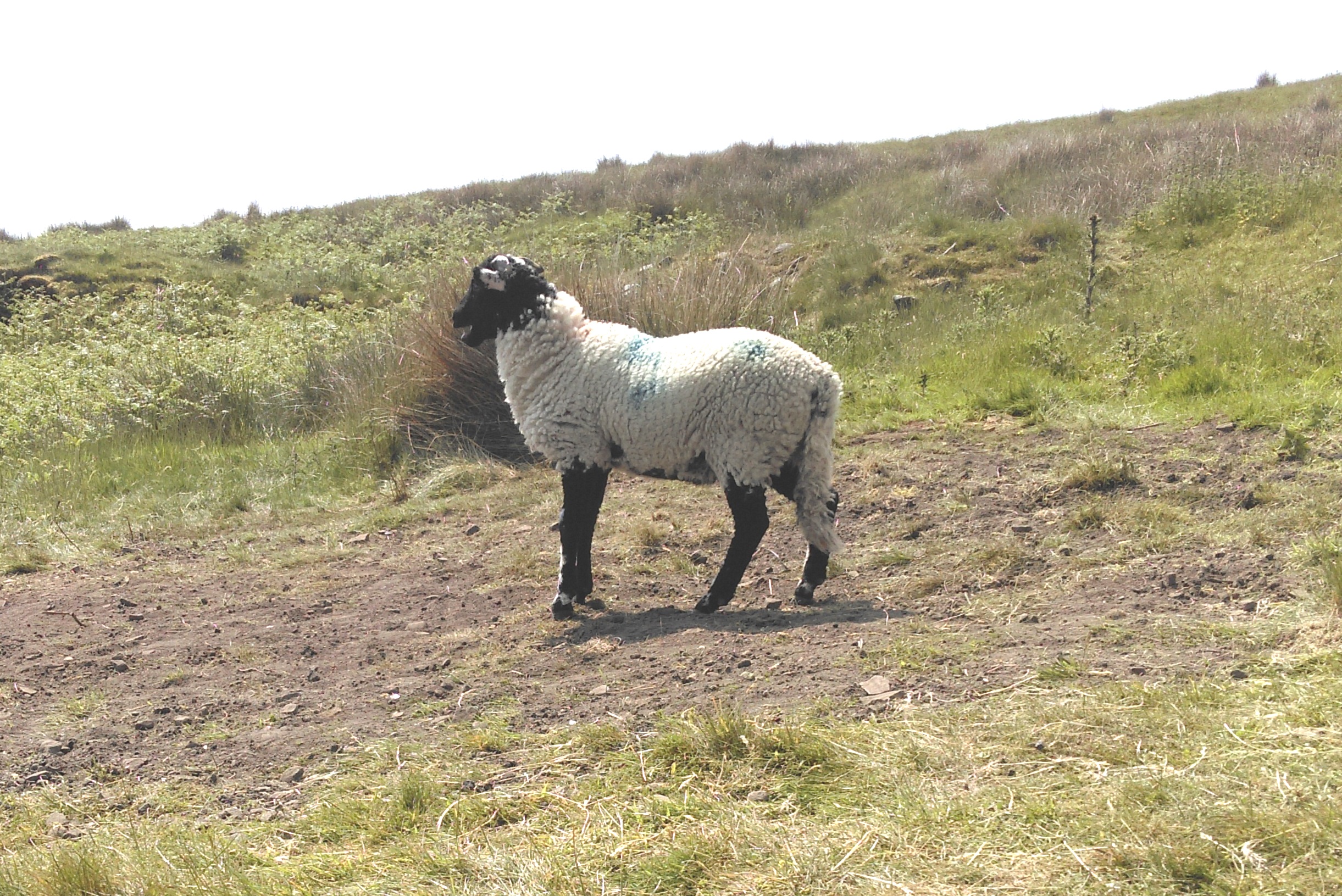
As you can see below we ended up with a bit Victoriana & Georgiana. We still have the post excavation to do & this will be done as a training event. Its a bit like doing a dozen jigsaws at once, with loads of bits missing.
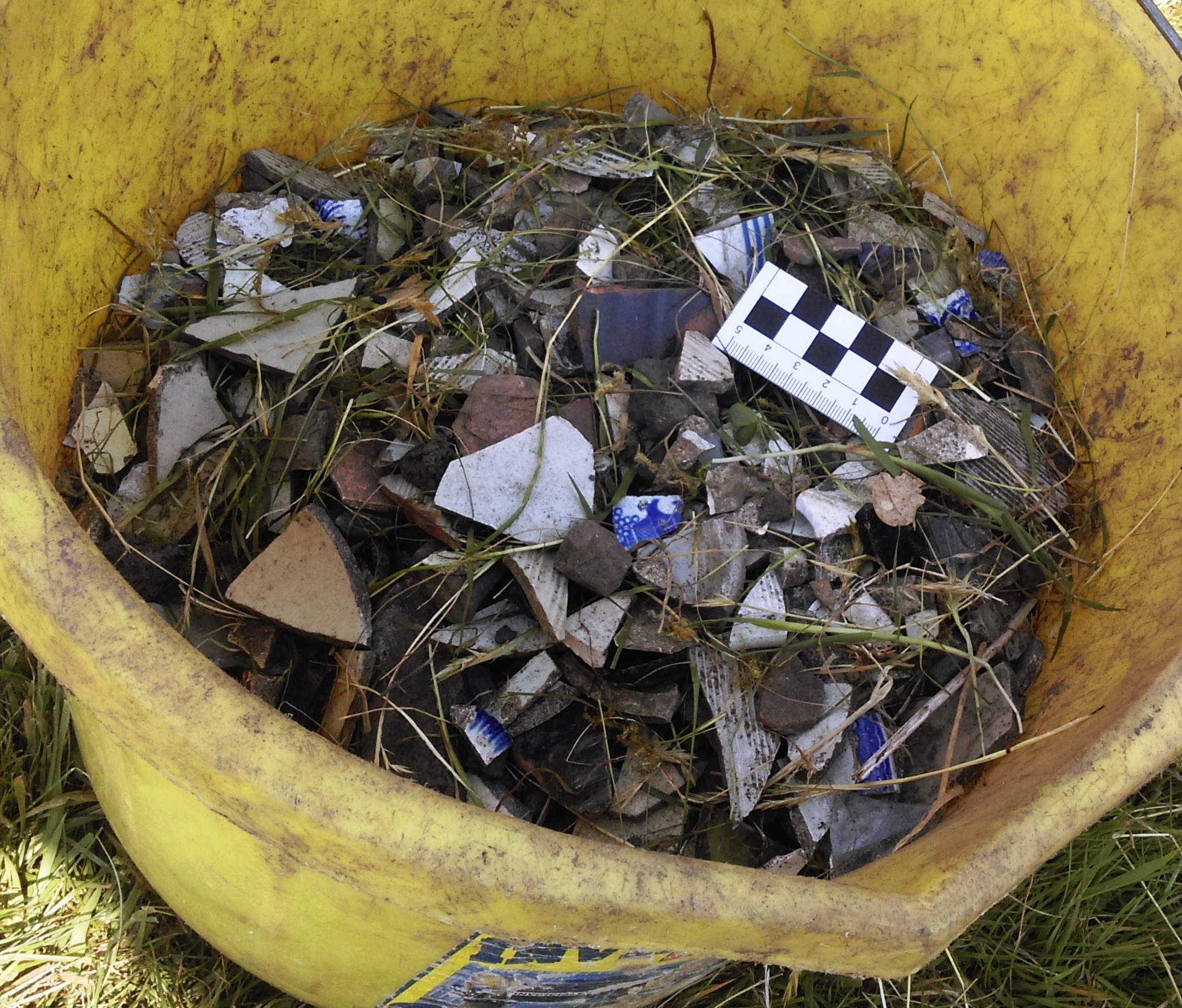
There were a few nice finds made in the course of backfilling. I’m going to leave it to you gentle reader to cast your votes for the final Find Of The Day by making a comment below or emailing pendleheritage@gmail.com and I will add the result later. Vote by listing the number of the finds in descending order of preference. For your edification: 1 is a sherd of an imitation Etruscan ware teapot, probably Victorian; 2 is part of a Victorian decorated pipe bowl; 3 is a fragment of Victorian Cranberry glass.
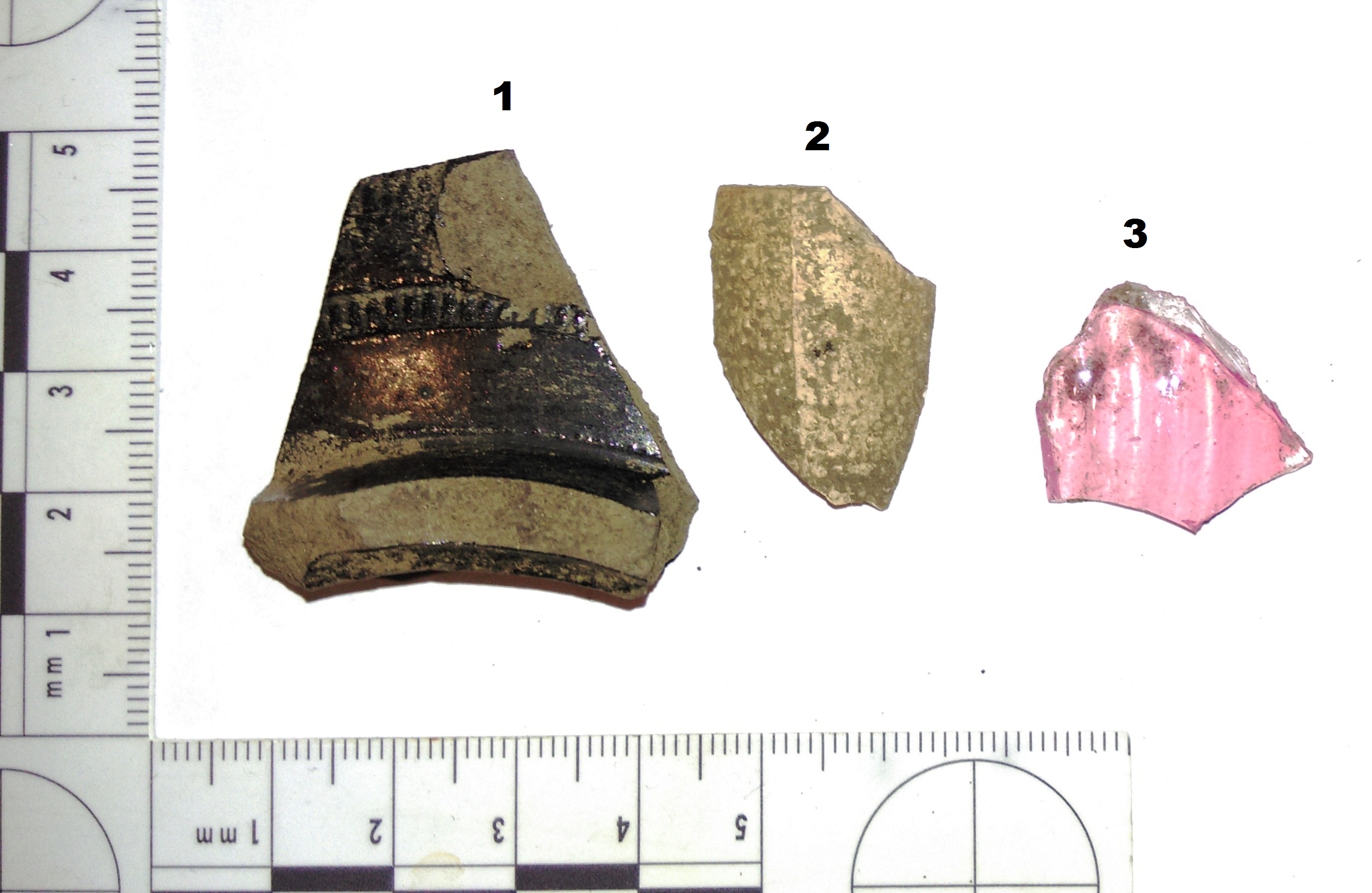
Any questions about anything to do with the dig or the groups activities, please email the above address or come along to one of our events.
Many thanks to all those who helped make the dig what it was & to those of you wise enough to join Pendle Heritage we have the post excavation & the report writing to look forward too. There will also be mid week walks to help the new members (& older if they want) to understand the wider context of the dig they participated in. The dig has been part of the Pendle’s Hidden Valley Project (details elswhere on the site) and the next event that is part of that is a field walk on the 25th of June.
Final full day of digging today, we were a small but perfectly formed crew, and the sun continued to shine upon the righteous. Before we started digging I took some photos (header image & below) of some of the artificial looking shapes that the sandstone off the site splits into naturally.
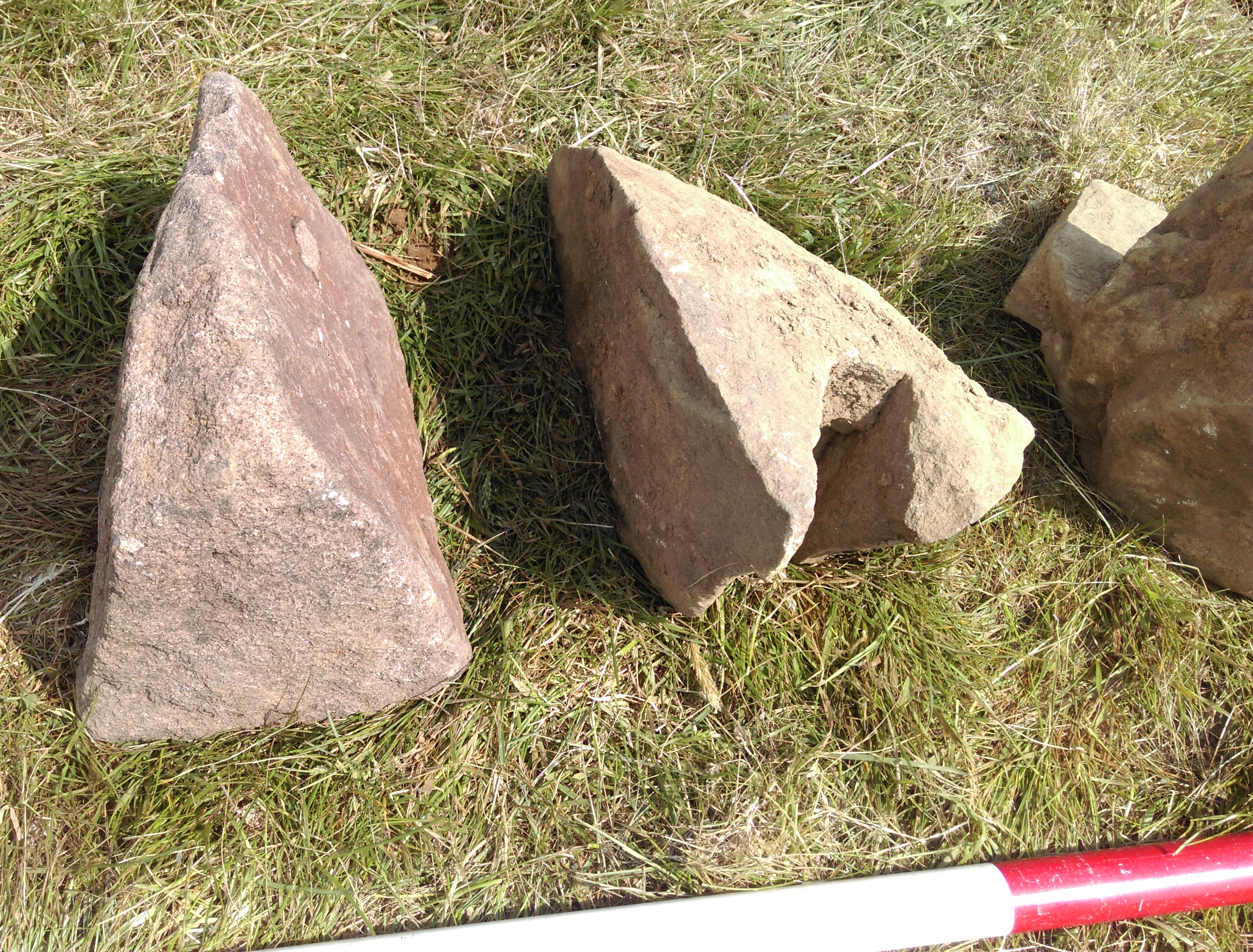
Trench 2 was left to its own devices today. It got some attention at the end of the day when we took some pictures of it – see below. The ‘butterflies’ are marking the interfaces of the different contexts.
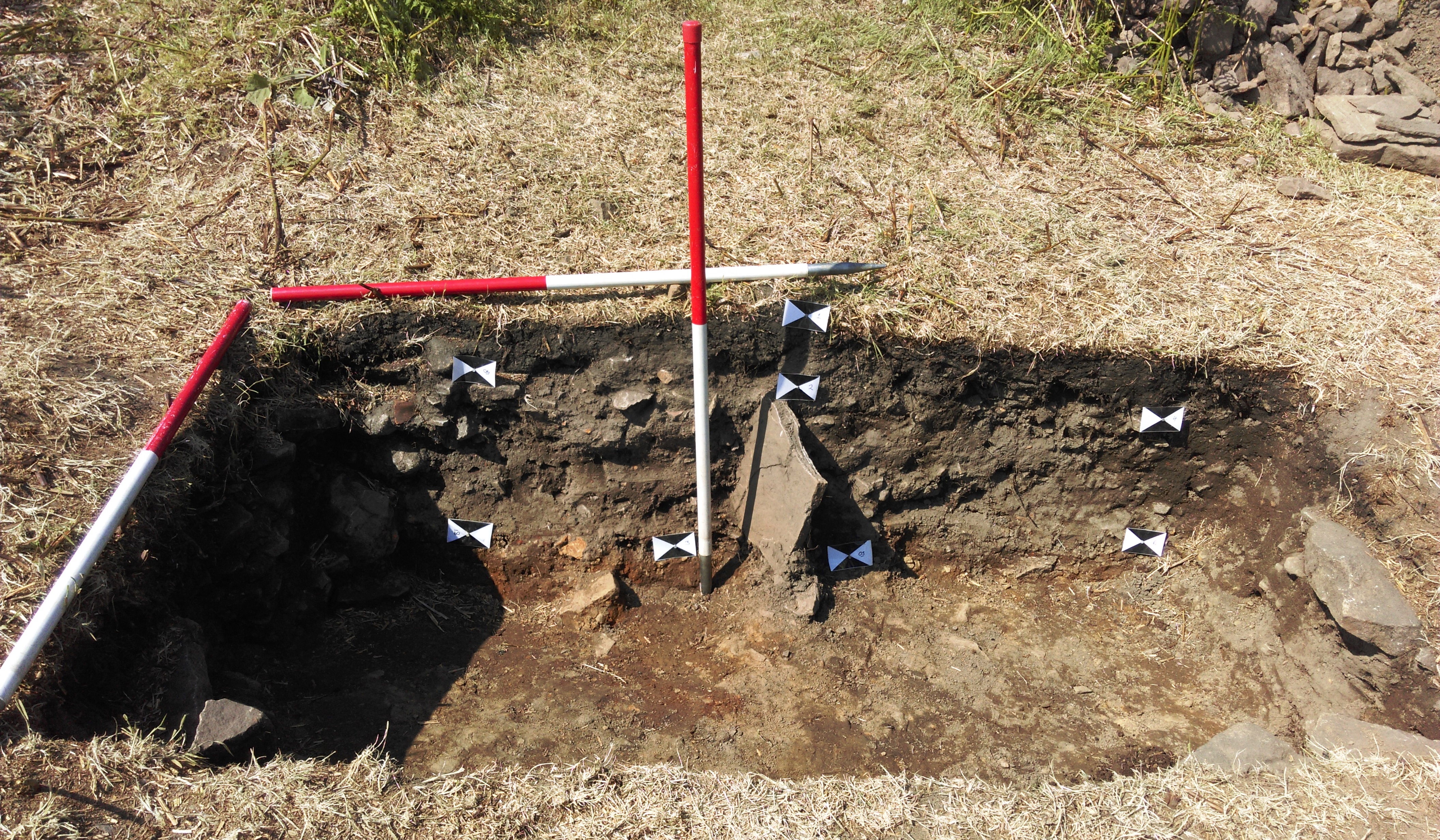
Trench 1 received the same attention – see below. All the digging took part in T1. We took the sondage down to 1300mm and its still deposited material. At about 1100mm and below there was some gritty water washed material & thin lenses of grey clay. These continued down for another 150mm then voids started appearing again. At this lowest level we are getting small bits of burnt material. From about 800mm the stones started becoming more massive too. Two of the three oddly shaped stones in the images at the start are from this level.
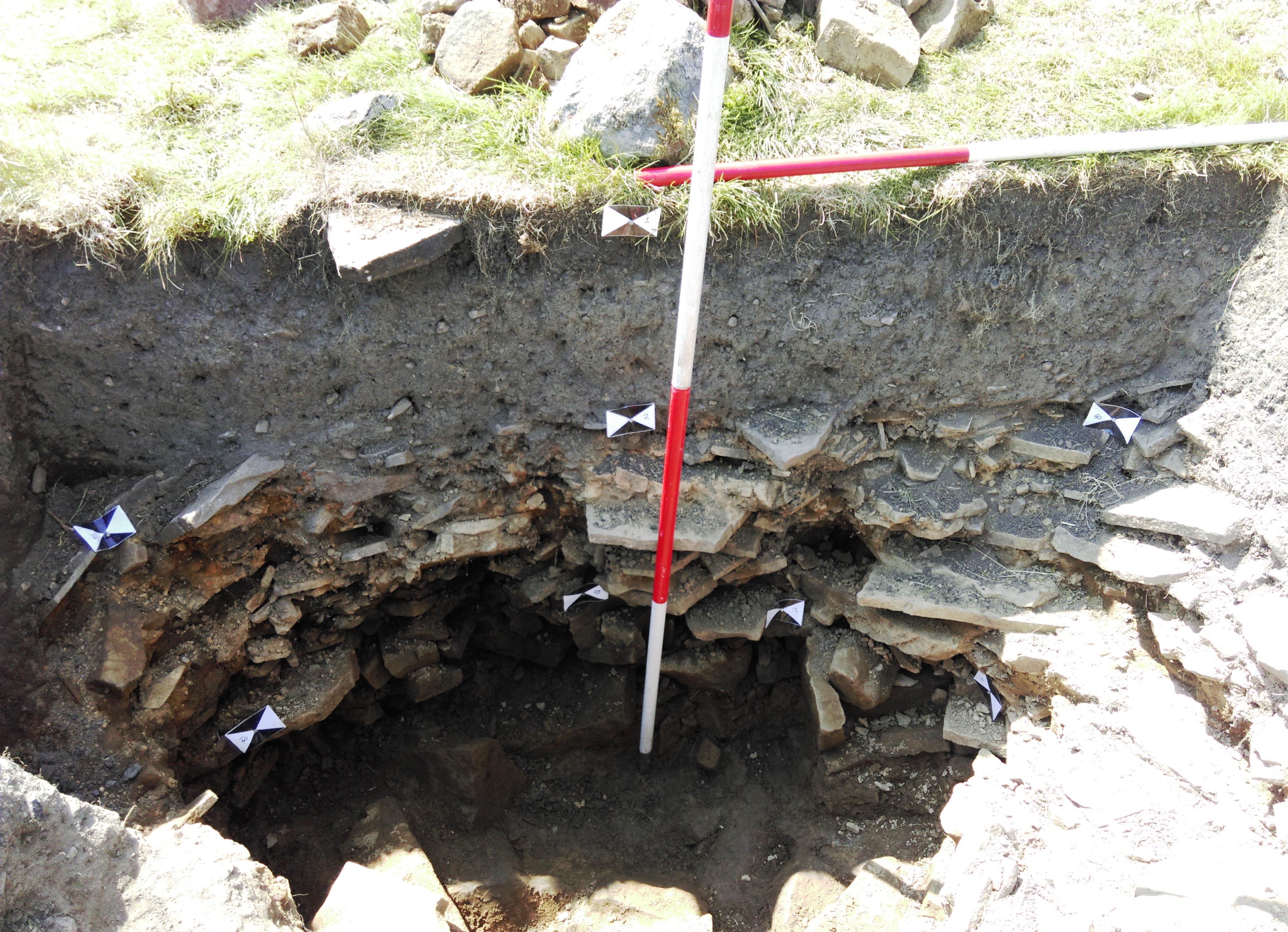
Meanwhile in Pet Sematary, the dog burials continued to be excavated & finally Find of the Day went to some not on their first day. The dog bones have been an ideal opportunity to teach some of our excellent new recruits a few of the more technical points about lifting soft bone. The Find of the Day (see below) was the also the final find of the day and it was a team effort to lift it. As you can see – the dogs back!
Most of the bone has been reinterred where it was found. We will hold the skulls for a short while but if we cannot get funds to preserve them they will go back too.
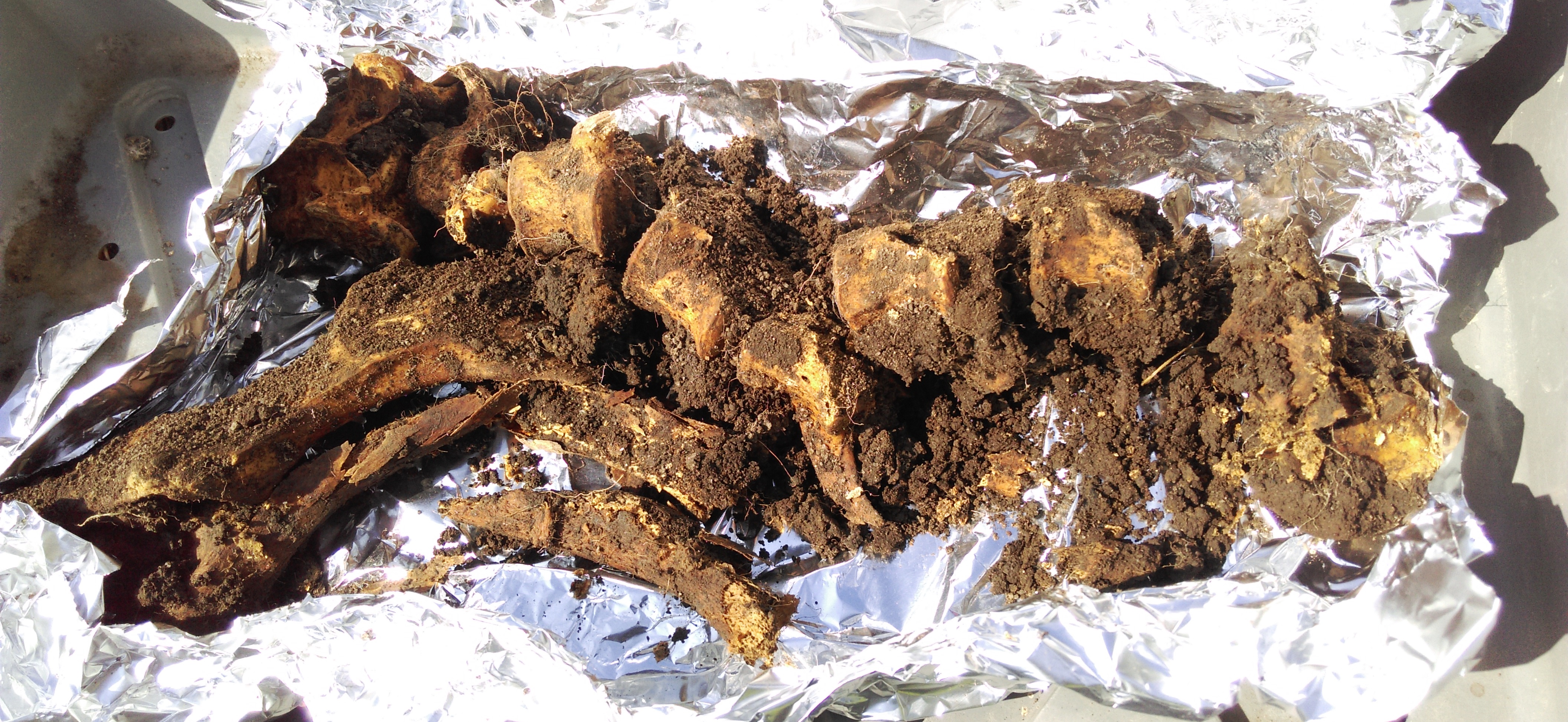
Final day tomorrow & its backfilling – good therapeutic stuff & much easier when shared so please come along in the morning to help if you can. Trench 2 will be the last to be backfilled so you can have a last minute dig if you want. I predict Find Of The Day will come from the spoil. Anyone who helps with the backfilling can take a small memento of the dig home with them.
Heartfelt thanks to all of you who came and joined us – we hope you enjoyed it & possibly even learned a little about the secrets of Pendle’s Hidden Valley.
Today the weather was scorchio! And there were plenty of people out to dig under little fluffy clouds (header image & below).
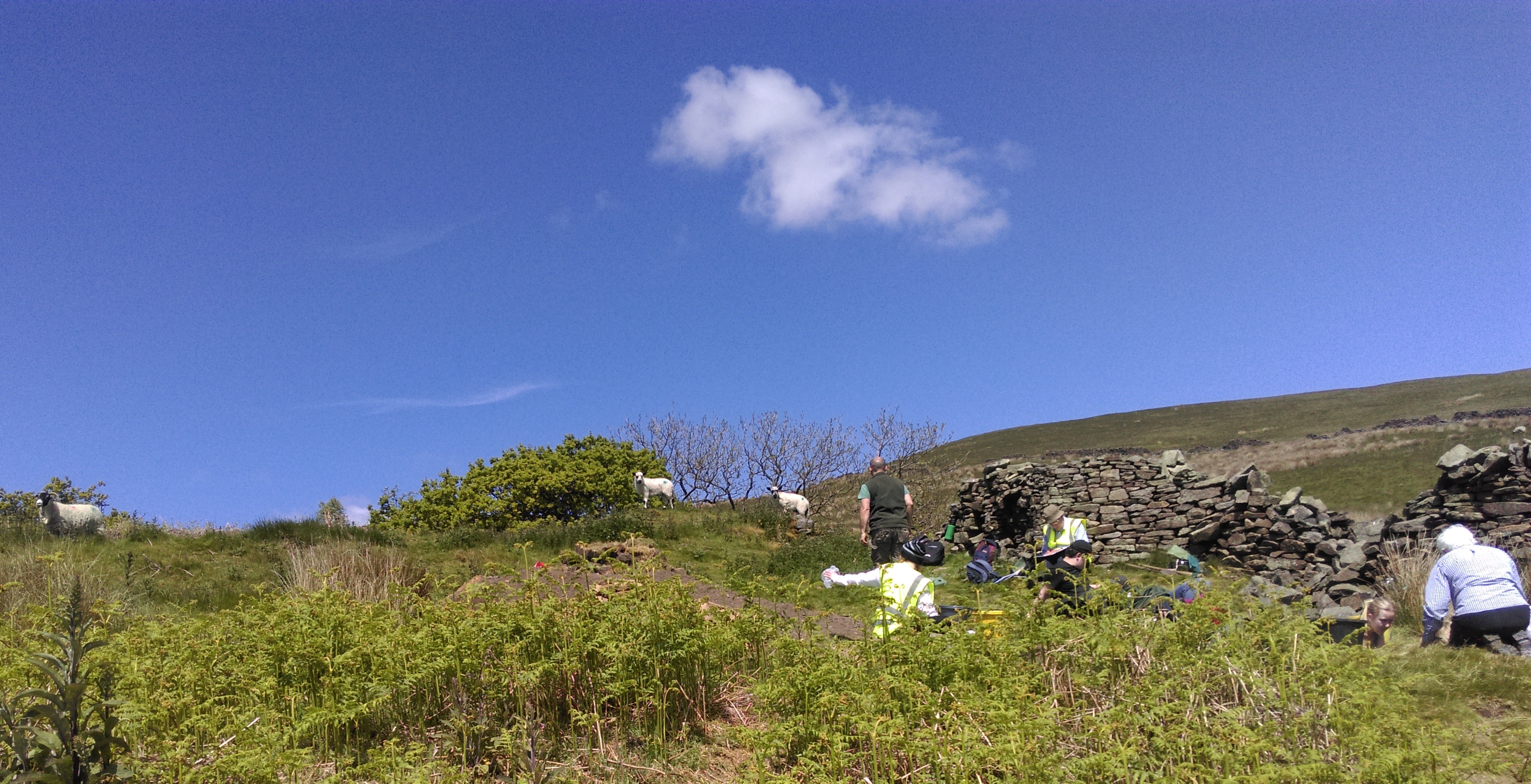
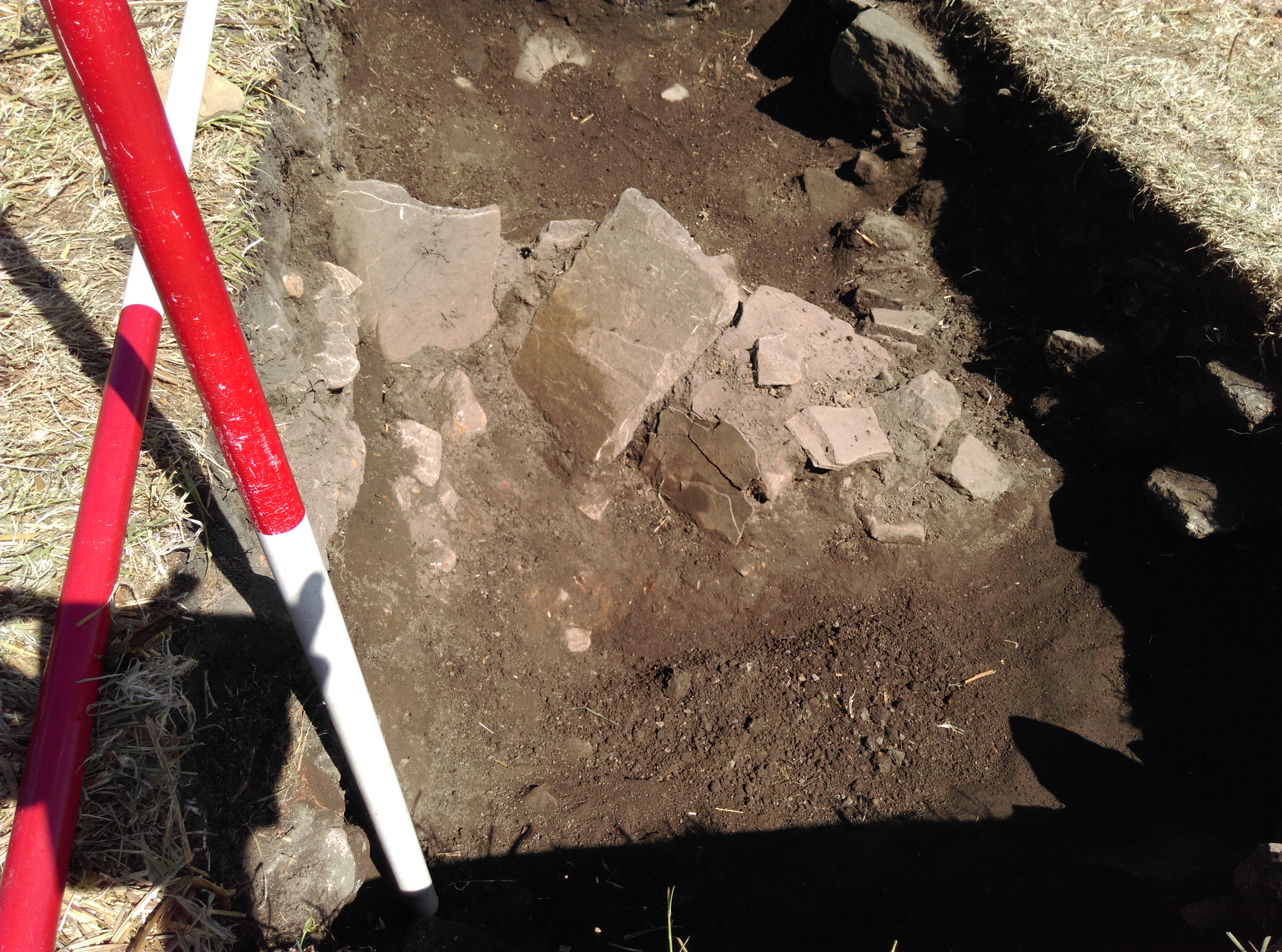
Things were happening in both trenches today & our trainees are learning fast. Trench 2 has had the slab lined feature cleaned up (see above – & below with approximate alignment of the slab line structure marked by the ranging rods on the ground) and removed.
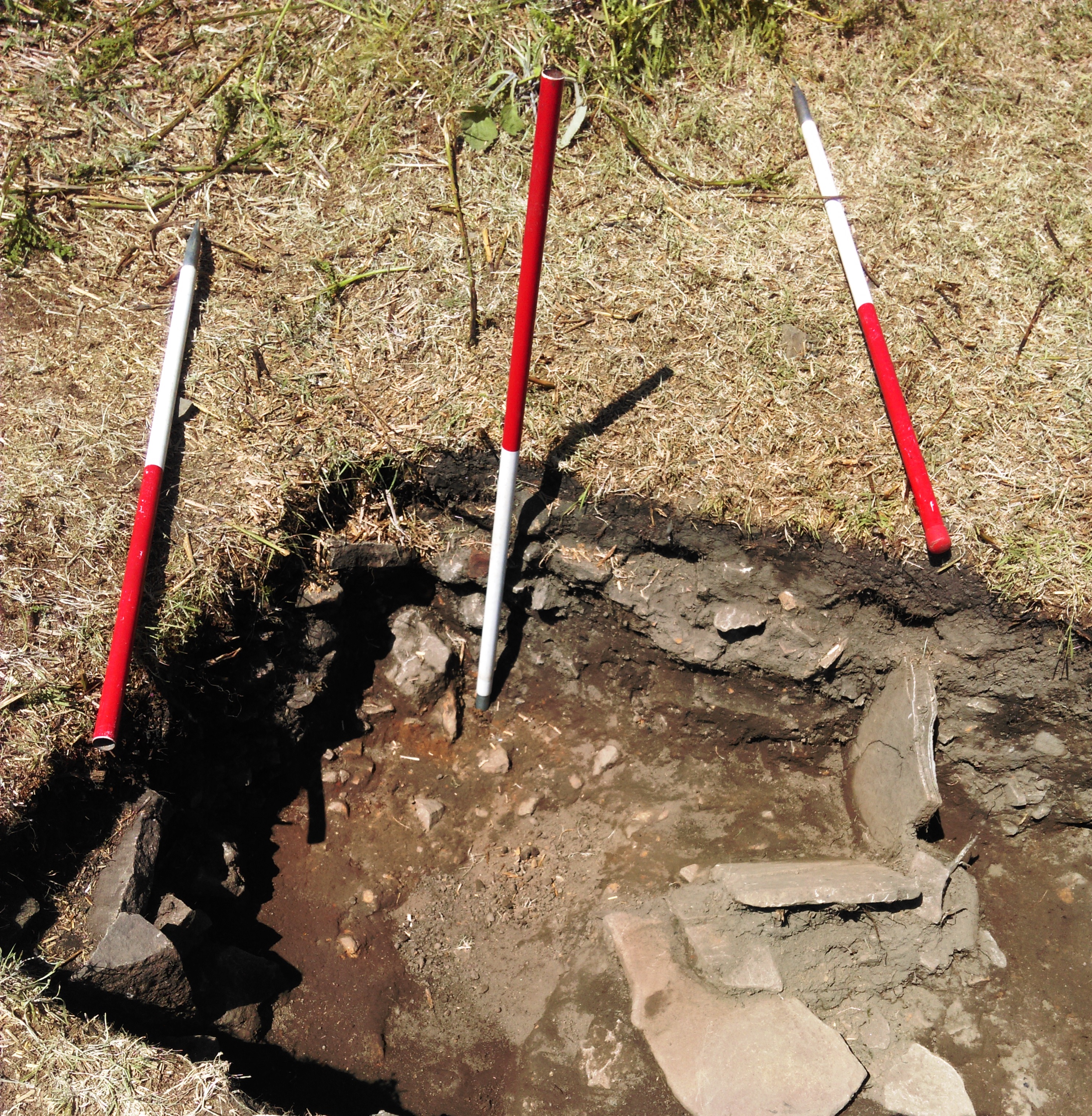
The new context (3) has been lowered & levelled (see below). There are very few finds in this context – just one in fact, a pancheon sherd.
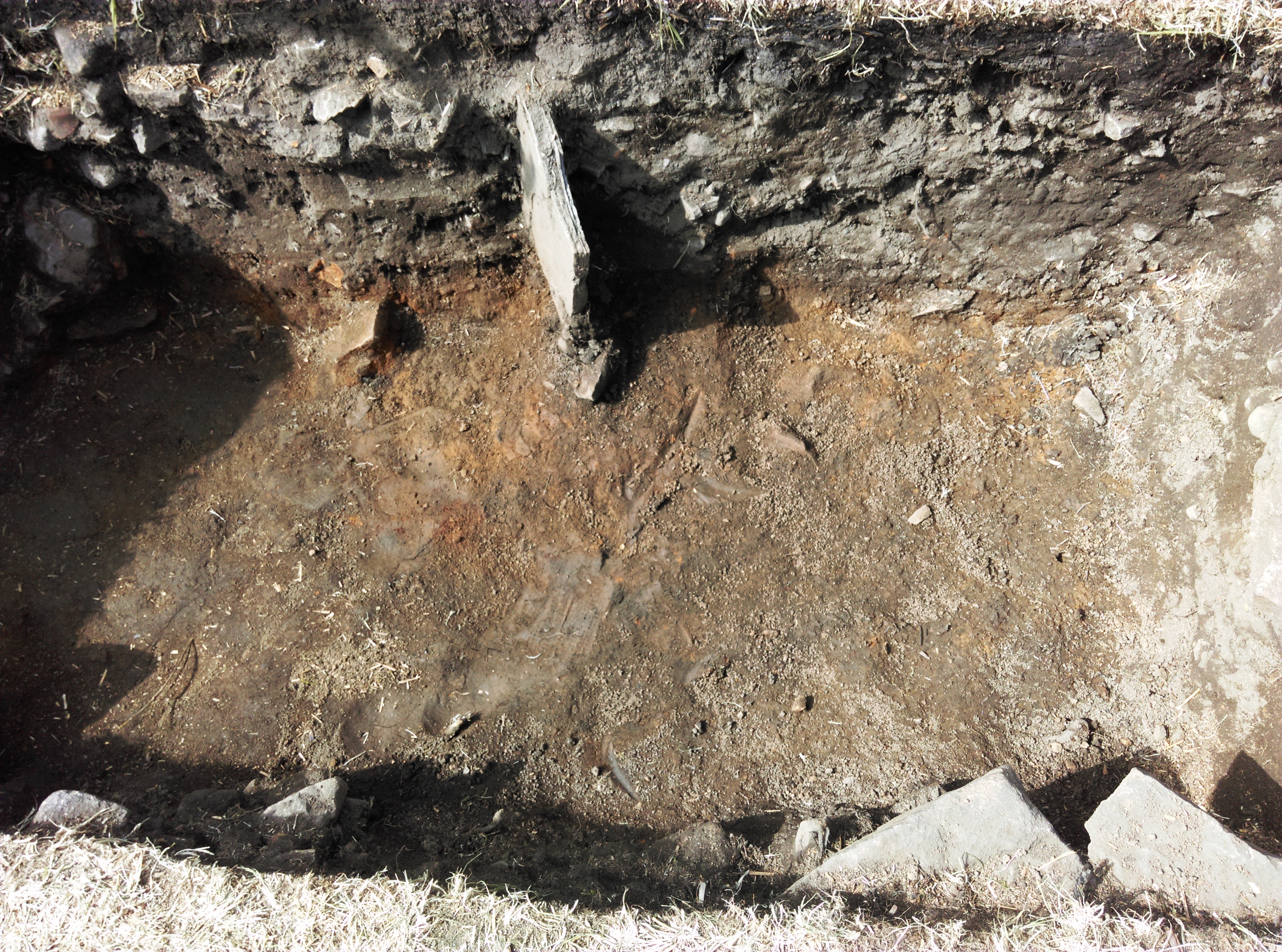
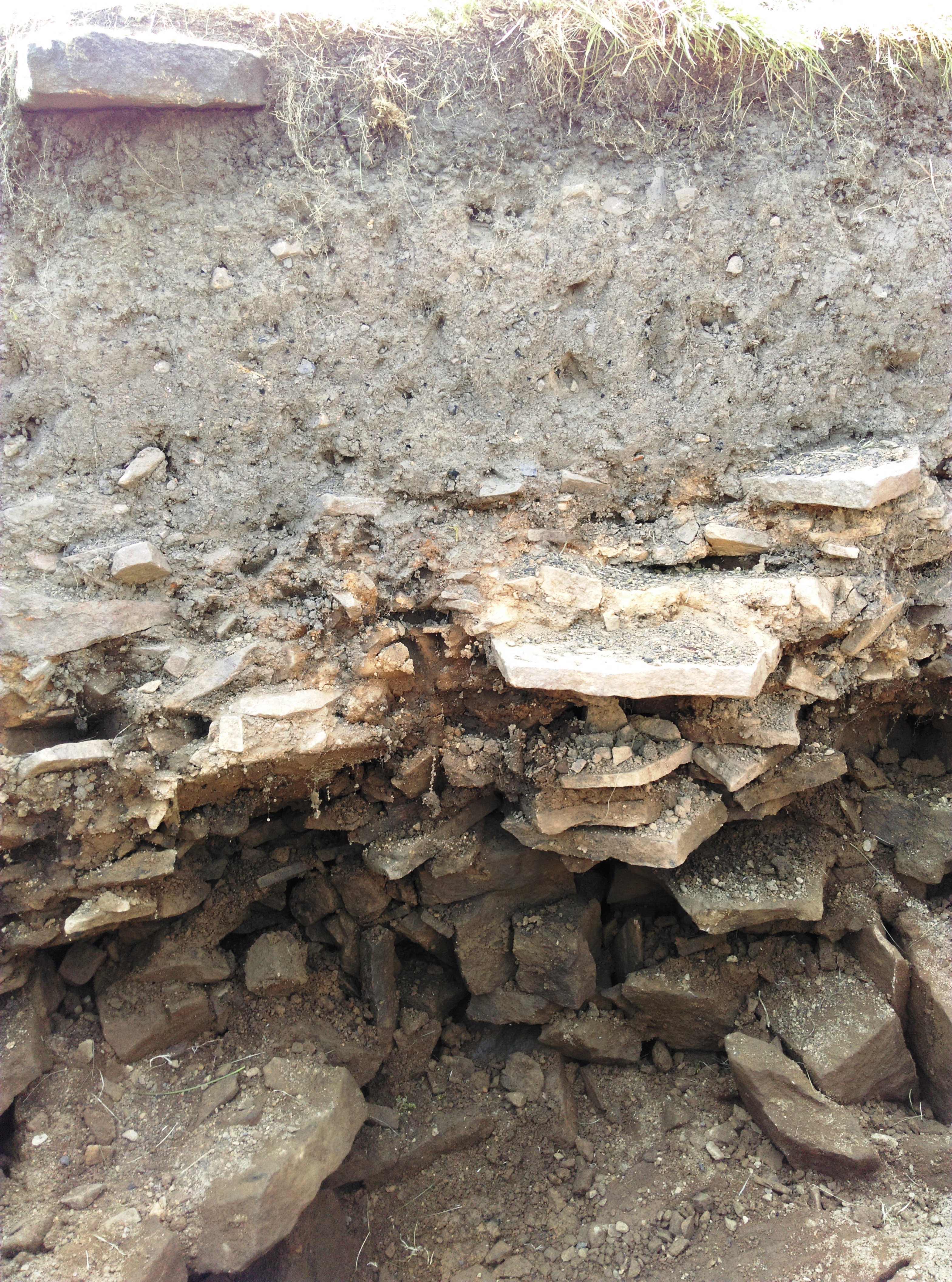
Context 3 in Trench 1 continues downward (see section photo above). The nature of the context and depth means it is no longer a place for beginners. The rest of T1 is still fine and progress through Context 1 has slowed due the amount of bone now being found. The upside of this is that it has afforded the opportunity for people to learn how to excavate & lift fragile bone. Made up a few more doggy bags to take home today. One containing half a leg & the other a skull (see below).
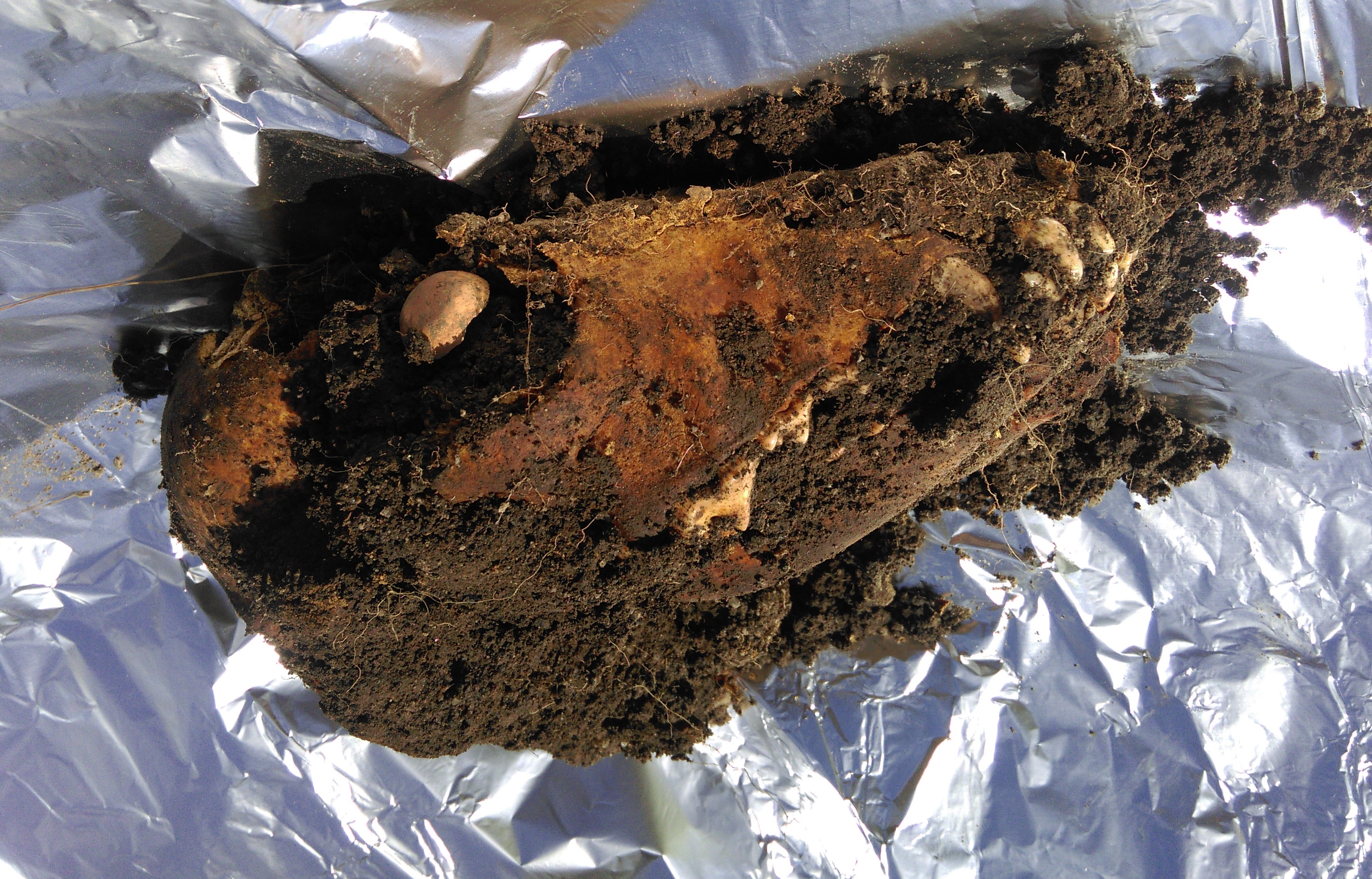
Find of the day was voted on in the end and went (obviously) to another debutante – its a rather sweet little ceramic applied vessel decoration in the form of an acanthus leaf.
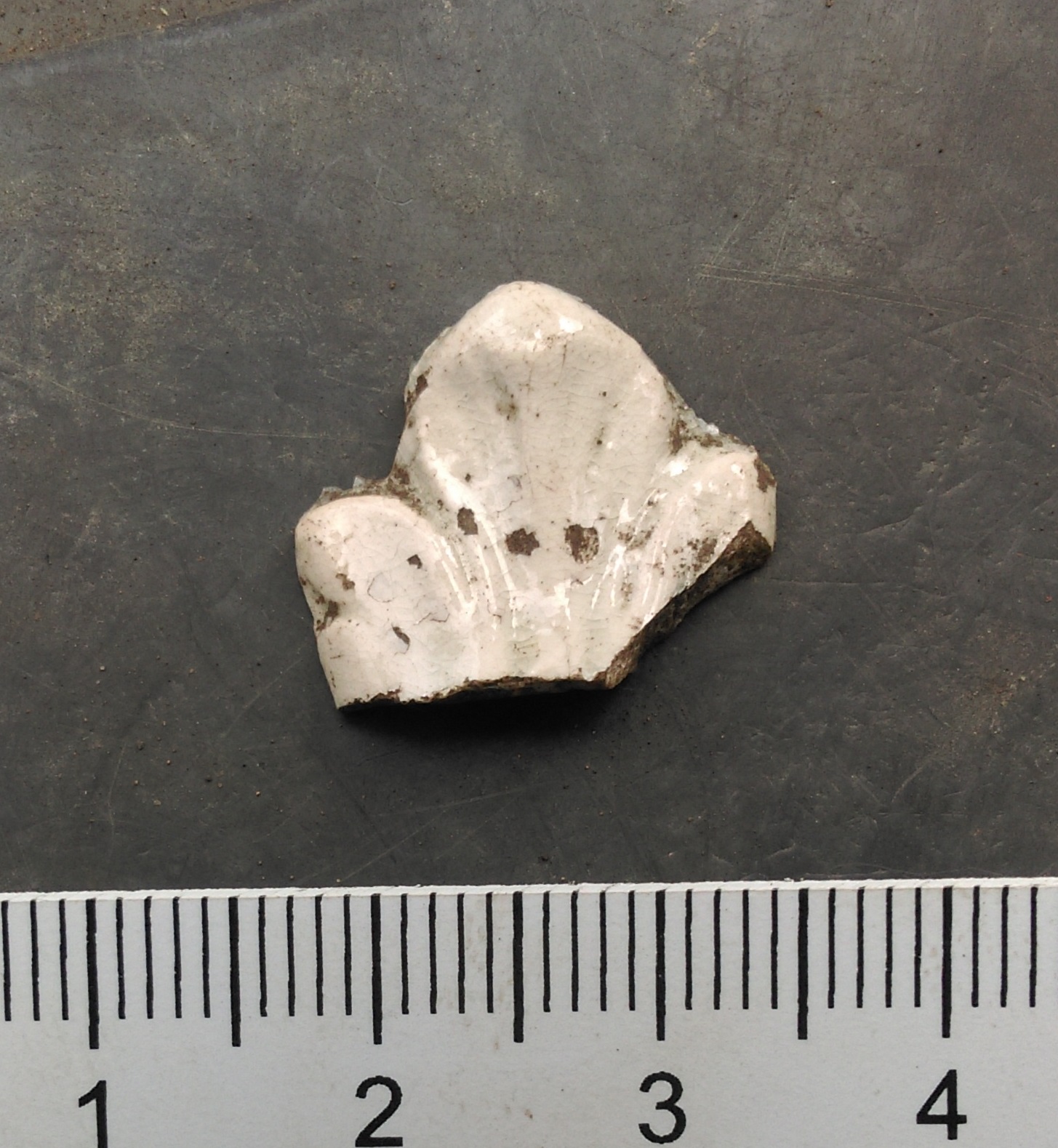
One more full day of digging left then backfilling Sunday – all help gratefully appreciated.